
THE MAGAZINE OF THE harassment | cryptocurrencies | tax reform | blockchain | work-life balance
EXPLORING THE ISSUES THAT SHAPE TODAY’S BUSINESS WORLD SPRING 2018


F O R M E R LY T H E M I DW E S T AC C O U N T I N G & F I N A N C E S H OWCA S E THE SHOW is changing. New name. New experience. Newlevel of awesome! Tu e s d a y-We d n e s d a y Augus t 28-29, 20 18 D o n a l d E . S t e p h e n s C o n v e n t i o n C e n t e r R o s e m o n t , I l l i n o i s Preparing you for the future! Tax Reform l Artificial Intelligence Cybersecurity l Blockchain Healthcare l A&A l Data Analytics
Developed for CPA firms


CPACharge is a professional, affordable online payment solution that lets you give clients the options they want Unlike other payment solutions, CPACharge deposits 100 percent of payments, with fees debited the following month, for easy, accurate reconciliation We provide PCI Level 1 compliance and security, and expert in-house support Get the solution that’s trusted by more than 50,000 professionals as the best way to get paid CPACharge

MEMBER DISCOUNT PROGRAM CPACharge is a registered ISO of C tizens Bank N A MORE
$1,000 Pay CPA Card Number CVV Exp. **** **** **** 9998 001 NOV 2021 Payment Detail Submit to Smith Johnson, CPA cpacharge.com/icpas 855-612-1016
OPTIONS, FASTER PAYMENTS



2 INSIGHT | www icpas org/insight SPRING 2018 www icpas org/insight IGNITING YOUR INFLUENCE 2 42 7 2 83 1 3 23 5 THE RISKS AND REWARDS OF CRYPTOCURRENCIES HOPPING ON THE TAX REFORM TRAIN spotlights 8 Seen & Heard How Winning Companies Keep Winning 10 Tech Pulse Business Interest in Blockchain Booms 50 Gen Next Brewing Your Own Business By Joshua Lance, CPA , CGMA 52 IN Play Q&A with Kim Szalkus, CPA By Sarah Herrmann trends 12 Professional Issues Hurt of Harassment By Clare Fitzgerald 14 Employee Benefits Remote Possibilities By Kristine Blenkhorn Rodriguez 16 Personal Finance Cashing in With Tax Reform By Mark Gilbert, CPA , PFS 18 Practice Management Turning Tax-Time Clients Into All-Time Clients By Jeff Stimpson insights 4 Today ’s CPA Is Anyone Listening? By Todd Shapiro 6 Leader ’s Letter Committed to Success By Rosaria Cammarata, CPA , CGMA 40 Capitol Report High Times Ahead in Illinois? By Marty Green, Esq 42 Corporate Minded A Growing Career, A Growing Family By Amanda L Gavin, CPA , MBA 44 Partner Perspectives Lessons to Learn From Today ’ s Young CPAs By Marc Rosenberg, CPA 46 Ethics Engaged The Golden Rules of Ethics By Elizabeth Pittelkow Kittner CPA, CGMA, CITP , DTM 48 Tax Decoded Federal Tax Reform’s Implications on Illinois By Keith Staats, JD
ILLINOIS CPA SOCIET Y
550 W Jackson Boulevard, Suite 900, Chicago, IL 60661 www.icpas.org
Publisher/President & CEO
Todd Shapiro Editor Derrick Lilly
Creative Director
Gene Levitan
Women’s Committee
Women to Watch Awards
We are looking for outstanding women who have made significant contributions to the accounting profession, their organizations, and to the development of women as leaders. Awards will be given in two categories and will consider the following:
experienced leaders
• Mentoring other professionals
• Major or unique contributions to the profession
• Leadership in workplace improvements
• Authorship of professional articles/ speaking engagements
• Involvement in community service and/or professional organizations
emerging leaders
• Demonstration of leadership
• Contributions to the profession
• Creation and implementation of unique workplace initiatives
• Involvement in community service and/or professional organizations
• Involvement with her alma mater
To nominate a candiate today, visit www.icpas.org/womentowatch
Deadline for nominations is 6.1.18
Deadline for application materials is 6.15.18
Candidates must be members of the Illinois CPA Society (ICPAS) and the American Institute of Certified Public Accountants (AICPA).
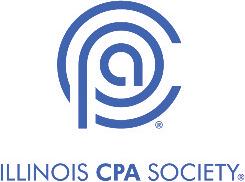
NOT A MEMBER?
Visit www.icpas.org and/or www.aicpa.org.
Photography Jay Rubinic + Derrick Lilly
Circulation
John McQuillan
ICPAS OFFICERS
Chairperson
Rosaria Cammarata, CPA, CGMA | Mattersight Corporation
Vice Chairperson
Geoffrey J Harlow, CPA | Wipfli LLP
Secretar y
Dorri C McWhorter, CPA, CGMA, CITP | YWCA Metropolitan Chicago
Treasurer
Kevin V Wydra, CPA | Crowe Horwath LLP
Immediate Past Chairperson
Lisa Hartkopf, CPA | Ernst & Young LLP
ICPAS BOARD OF DIRECTORS
Christopher F Beaulieu, CPA, MST | FSB&W LLC
John C Bird, CPA | RSM US LLP
Brian J Blaha, CPA | Wipfli LLP
Jon S Davis, CPA | University of Illinois
Stephen R Ferrara, CPA | BDO USA LLP
Jonathan W Hauser, CPA | KPMG LLP
Scott E Hurwitz, CPA | Deloitte & Touche LLP

Anne M Kohler, CPA, CGMA | The Mpower Group
Thomas B Murtagh, CPA, JD | BKD LLP
Elizabeth S Pittelkow Kittner, CPA, CGMA, CITP | Litera Microsystems
Maria de J Prado, CPA | Prado & Renteria CPAs
Seun Salami, CPA | Jones Lang LaSalle Inc
Stella Marie Santos, CPA | Adelfia LLC
Andrea K Urban, CPA | ThoughtWorks Inc
BACK ISSUES + REPRINTS
Back issues may be available Articles may be reproduced with permission
Please send requests to lillyd@icpas org
ADVERTISING
Want to reach 25,000 accounting and finance professionals? Advertising in INSIGHT and with the Illinois CPA Society gives you access to Illinois’ largest financial community Contact Mike Walker at mike@rwwcompany com
INSIGHT is the magazine of the Illinois CPA Society Statements or articles of opinion appearing in INSIGHT are not necessarily the views of the Illinois CPA Society The materials and information contained within INSIGHT are offered as information only and not as practice, financial, accounting, legal or other professional advice Readers are strongly encouraged to consult with an appropriate professional advisor before acting on the information contained in this publication It is INSIGHT’s policy not to knowingly accept advertising that discriminates on the basis of race, religion, sex, age or origin The Illinois CPA Society reserves the right to reject paid advertising that does not meet INSIGHT’s qualifications or that may detract from its professional and ethical standards The Illinois CPA Society does not necessarily endorse the non-Society resources, services or products that may appear or be referenced within INSIGHT, and makes no representation or warranties about the products or services they may provide or their accuracy or claims The Illinois CPA Society does not guarantee delivery dates for INSIGHT The Society disclaims all warranties, express or implied, and assumes no responsibility whatsoever for damages incurred as a result of delays in delivering INSIGHT INSIGHT (ISSN-1053-8542) is published four times a year, in Spring, Summer, Fall, and Winter, by the Illinois CPA Society, 550 W Jackson, Suite 900, Chicago, IL 60661, USA, 312 993 0407 Copyright © 2017 No part of the contents may be reproduced by any means without the written consent of INSIGHT Send requests to the address above Periodicals postage paid at Chicago, IL and at additional mailing offices POSTMASTER: Send address changes to: INSIGHT, Illinois CPA Society, 550 W Jackson, Suite 900, Chicago, IL 60661, USA
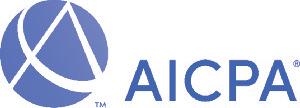
2018
Call for Nominations 2
today’sCPA
INSIGHTS FROM TODD SHAPIRO, ICPAS PRESIDENT & CEO

{Follow Todd on Twitter @Todd ICPAS}
{Watch Todd’s CEO Video Series on YouTube}
Is Anyone Listening?
If you think gaining influence and making decisions in your organization is hard, you ’ re not alone.
Ilearned early on in my career just how challenging, and sometimes frustrating, the decision-making process can be. Seemingly ages ago, as a manager at Quaker Oats, I attended an influence m a n a g e m e n t s e m i n a r p u t o n b y m y e m p l o y e r a t t h e t i m e . T h r o u g h o u t t h e s e m i n a r t h e i n s t r u c t o r s c o a c h e d u s o n v a r i o u s ways to influence others. Shortly after, I was in a meeting with my division president discussing which way to go on a business issue, which seemed like a good time to test my new influencing skills. I was utilizing all the methods taught to me during the seminar w h e n m y b o s s s t o p p e d m e a n d s a i d , “ We ’ r e d o i n g i t m y w a y, because I’m on this side of the desk, and you’re on that side of the desk ” That experience has stayed with me to this day

Making decisions “because I said so” or “because I’m the boss” not only risks making poor choices, it risks losing the support of t h o s e i m p l e m e n t i n g o r i m p a c t i n g t h e o u t c o m e F r o m f i r s t h a n d experience, I can tell you nothing breaks the spirit of staff more than being faced with those words Likewise, nothing encourages and empowers staff more than feeling like an influential part of the decision-making process
Every day, in every organization, countless decisions are made S o m e a r e s m a l l , a n d s o m e a r e c r i t i c a l t o t h e l i f e b l o o d o f t h e organization, literally setting the direction of the culture and future of the business I often tell my staff that it’s not necessarily most important who makes the final decisions but whether you had a seat at the table to influence the outcomes
So, how does one become an influencer? Just as I stress that in most situations there’s no single “right” answer, there’s no single m e t h o d t o g a i n i n g i n f l u e n c e R a t h e r, i n f l u e n c e g r o w s a n d becomes most powerful when backed by knowledge, experience, and command of compelling data and information (I’m a strong believer in data-based decision-making).
We must stop mistakenly thinking of influencers only as the people already “in charge ” Being influential and influencing decisions is not just the purview of experienced, long-term staff, or the partners, CEOs, CFOs, and other executives; the reality is, we all have a responsibility and desire to be influencers Young professionals, especially, need to embrace the mindset of becoming influential and decision-makers in organizations (this will be the theme of this year ’s Young Professional Leadership Conference)
Stop and look at the world around us At the end of the day, I want you to ask yourself if you’re going to be an influencer or stay on t h e s i d e l i n e s B e i n g a n i n f l u e n c e r a n d , u l t i m a t e l y, a d e c i s i o nmaker, comes with great responsibility I encourage you to step up and take it We need more positive and innovative influencers and decision-makers in our profession
4 INSIGHT | www icpas org/insight
You probably already have life insurance. But do you have enough?
Over the years, your living expenses may have increased. Could your current life insurance benefits:
• Help your family maintain their lifestyle?
• Pay for your kids’ college education?
• Allow your spouse to retire comfortably?
It ’s always a struggle to lose someone you love But your family’s emotional struggles don’t need to be compounded by financial problems
That’s why the Group 10-Year Level Term Life Insurance Plan is made available to ICPAS members * This valuable insurance program offers:

• Your choice of benefit amounts up to $250,000.
• Rates that are locked in for 10 full years.
Four Learn more today! Visit www.plansforICPASmembers.com or call 1-800-842-4272 for more information
households without any life insurance would have immediate trouble paying living expenses
loss

*Underwritten by Hartford Life and Accident Insurance Company, Hartford, CT 06155 Life Form Series includes GBD-1000, GBD-1100, or state equivalent All benefits are subject to the terms and conditions of the policy Policies underwritten by Hartford Life and Accident Insurance Company detail exclusions, limitations, and terms under which the policies may be continued in force or discontinued Program Administered by Mercer Health & Benefits Administration LLC AR Insurance License #100102691 CA Insurance License #0G39709 In CA d/b/a Mercer Health & Benefits Insurance Services LLC 82328 (3/18) Copyright 2018 Mercer LLC All rights reserved
Help protect your loved ones when they may need it the most with economical life insurance
PEAC E O F M I N D
in 10 U.S.
from the
of the
• Benefit amounts remain steady for the 10-year coverage period. There are no age reductions. 1 Insurance Barometer Study, LIMRA, 2017 See how affordable additional peace of mind can be for you and your family (including eligibility, benefits, premium rates, exclusions, limitations and termination provisions) *
primary wage earner.1
’sletter
Committed to Success
It’s an honor to be able to write this letter. It’s tradition for the new Illinois CPA Society Board Chair to share their story of how they got here, but I can’t share mine without sharing my parents’ story I’m a born and bred Chicagoan, and like many, I’m the child of immigrants My parents each traveled their own journey to the U . S . a s y o u n g a d u l t s b e f o r e m e e t i n g , m a r r y i n g , a n d w o r k i n g together to support a growing family My mom worked six days a week as a seamstress for decades until the day she finally owned that business My dad worked factory and other labor jobs while taking computer and engineering classes at night, graduating with his bachelor ’s degree several years after I did. We sometimes struggled financially, but because of their determination and ingenuity, we never wanted for anything important
My dad instilled in me a love of numbers, process, and technology My mom taught me to be resourceful in solving problems, and to consider the details and the bigger picture in any situation They both taught me the importance of planning and commitment, while our circumstances gave me an early appreciation for the importance of financial literacy and stability. Given that, it’s not a surprise that I declared my major as accounting in a fifth-grade essay about what I wanted to be when I grew up
Except for five years in public accounting, I’ve spent my entire career in corporate finance My CPA credential has served as an invaluable foundation for a broad range of responsibilities I’ve
experiences in financial reporting, operations, systems, and process engineering, eventually taking on a leadership role that let me do all those things at once. I never could turn down a challenge.

Challenge has always invigorated me, and I hope it invigorates you, because these are exciting times for our profession We’re in the midst of a technological revolution that is reinventing the way we work, the skills we need, and the risks we manage Working for a technology company, I see this transformation gaining speed and scope every day We’re also experiencing a rapidly changing workforce as a large generation of experienced professionals retires.
These disruptive forces are creating opportunities we couldn’t have imagined a decade ago To capitalize on these opportunities, our profession needs to continue to attract and retain new and diverse talent We need to encourage innovation and embrace new ideas about how we work and what we do We also need to continue to enhance the competencies that define us as CPAs and the CPA credential to include technology-based skills, like data analytics, so we can respond to new demands in our business world
As I learned early on, success requires commitment I believe in, and am committed to, the continued success of our profession As your chair, I’m committed to the continued success of you

6 INSIGHT | www icpas org/insight
b e e n a b l e t o l e v e r a g e m y C PA b a c k g r o u n d t o g a i n r o l e s a n d
Rosaria Cammarata, CPA , CGMA is Vice President & Controller for Mattersight Corporation
A MESSAGE FROM 2018 ICPAS CHAIR ROSARIA CAMMARATA, CPA, CGMA
leader
Study accounting
the language of business
Nor thwestern’s online post-baccalaureate cer tificates provide working professionals with the precise education they need for career advancement , CPA exam preparation or graduate school application. Three cer tificates — Fundamentals of Accounting, Advanced Accounting, and CPA Preparation are available online.
Apply today — applications are accepted every quarter. sps.nor thwestern.edu/accounting • 312-503-2579
P O S T-BA C C A L A U R E A T E P R O G R A M S
—
How Winning Companies Keep Winning
A long-term bull market has made it easy to enhance shareholder value, but The Boston Consulting Group (BCG) warns that real winning doesn’t always come so easy BCG’s recent repor t, “The Transformations That Work and Why,” reveals at any time, nearly one-third of large U S companies endure severe, two-year declines in their ability to create shareholder value and about a third fail to recover within the following five years

Citing flat R&D investments and capital expenditures as recent red flags, BCG fears many companies aren’t doing enough to keep up and could slip into decline So how do winners keep winning, and losers star t winning?
BCG says companies must “fundamentall y transform themselves in ways that dramatically and sustainably improve per formance ” The kicker? They must do this at least once ever y five years The payof f? A 14-percentage point increase in long-term shareholder returns
So, whether you’re leading a company or advising one, here’s what BCG’s evidence-based repor t says leads to winning transformations and increasing long-term company values:
Spending on Revenue Creators: “In the long term, revenue growth is the biggest factor in transformation success,” BCG says “A company can’t cut and trim its way to top-quar tile per formance ” Instead, it should aim to grow by spending on R&D and innovation with a clear link to sales growth
Taking a Formal Transformation Approach: “CEOs and leaders need to show compelling plans, take immediate
action, and lay the groundwork for leading with a clear vision and solid objectives,” BCG states Bold and clear communication establishes credibility with investors and other stakeholders
Appointing Action-Oriented, Disruptive Leader s: “To transform a company, the CEO and senior leaders must be willing to change the business dramatically,” BCG suggests And if they’re not? Well, they may have to go The disruption necessar y for real transformations cannot be underestimated
Taking R apid Action: “Instead of tr ying to reinvent the company all at once, leaders should work to immediately kick of f rapid moves that are easy to implement in the first 1 00 days and can generate results in 3-to-12 months,” BCG says, which can boost CEO credibility
Applying Directive & Inclusive Leadership: “Transformation takes more than traditional, directive leadership; it also calls for inclusive leadership, such as fostering collaboration, soliciting feedback, and empowering teams,” BCG explains, meaning CEOs and HR teams must be mindful of how transformations af fect people throughout the company
Building a Diver se Leader ship Team: Companies must also focus on acquiring talent and leadership that will sustain the changes into the future. As BCG notes: “It’s impor tant to strike the right balance between external hires, with new ideas and capabilities, and internal talent, with deep knowledge of the business and organization ”
8 INSIGHT | www icpas org/insight

To sp e a k w i t h one of our e xecut i ve recrui t ers , c all 312.582.180 0 t oday! w ww.brilliantfs .com Follow @ BrilliantFS. Our t e a m is compris e d o f f o rmer a ccounting a n d f inance p r o fessionals wh o k now t h e industry. We c a n h elp. Searc h i n g f or you r n ex t acc o u n t i n g o r nance role? Let B r illiant g uide you thr oug h t h e p rocess.
Business Interest in Blockchain Booms
Bitcoin may have brought blockchain into the limelight, but the technology behind cr yptocurrency record-keeping is increasingly spreading into the mainstream business world
“Companies that move products and people through complex supply chains see promise in the inherent security and ease of use of blockchain,” says David Schatsky, an emerging technologies anal yst and managing director at Deloitte LLP, in an inter view with Kim S Nash for the Wall Street Journal
A blockchain digital ledger allows users to add blocks of information to the chain af ter each par ty runs algorithms to mutually evaluate and validate a proposed transaction Once approved, the transaction or data is time-stamped and added to the chain, which is inherently encr ypted, unchangeable, and always up-to-date on all users’ systems
Nash repor ts British Air ways is testing blockchain for maintaining consistent real-time flight data across airpor t gates and monitors, airline websites, and in customer apps Walmar t is also betting big on the technology, developing blockchain solutions with IBM to manage its suppl y -chain data for dozens of products
As Nash learned, Walmar t’s blockchain allows the company to precisely track the produce and products it carries For instance, the retailer has been testing the technology for
several months in its mango supply chain between the U S , Mexico, and some South American countries
“Af ter a mango is picked from a tree, it makes many stops before getting to a store shelf. Farmers, packing-house workers, and others along the way use a mobile app from Walmar t to send details such as har vest dates, locations, and images of their fruit to the retailer’s blockchain,” Nash writes Walmar t’s head of food safety, Frank Yiannas, tells Nash that the process is simpler and more secure than the array of barcodes, scanners, paper forms, and individual databases typically used In fact, in a simulated recall, Yiannas says his team traced the origin of a bag of sliced mangoes in just 2.2 seconds in the blockchain versus the nearly seven days it took using Walmar t’s other systems
Y iannas explains that blockchain’s speed and accuracy allows the retailer to save sales, and prevent fur ther illness and possibl y death, as stores will know exactl y which mangoes to pull of f shelves in case of crisis
With corporate spending on blockchain sof tware expected to reach $2 1 billion in 20 1 8, up from $9 45 million in 20 1 7, according to researcher International Data Corp , blockchain is quickly becoming a technology accounting and finance professionals will need to know and embrace

10 INSIGHT | www icpas org/insight
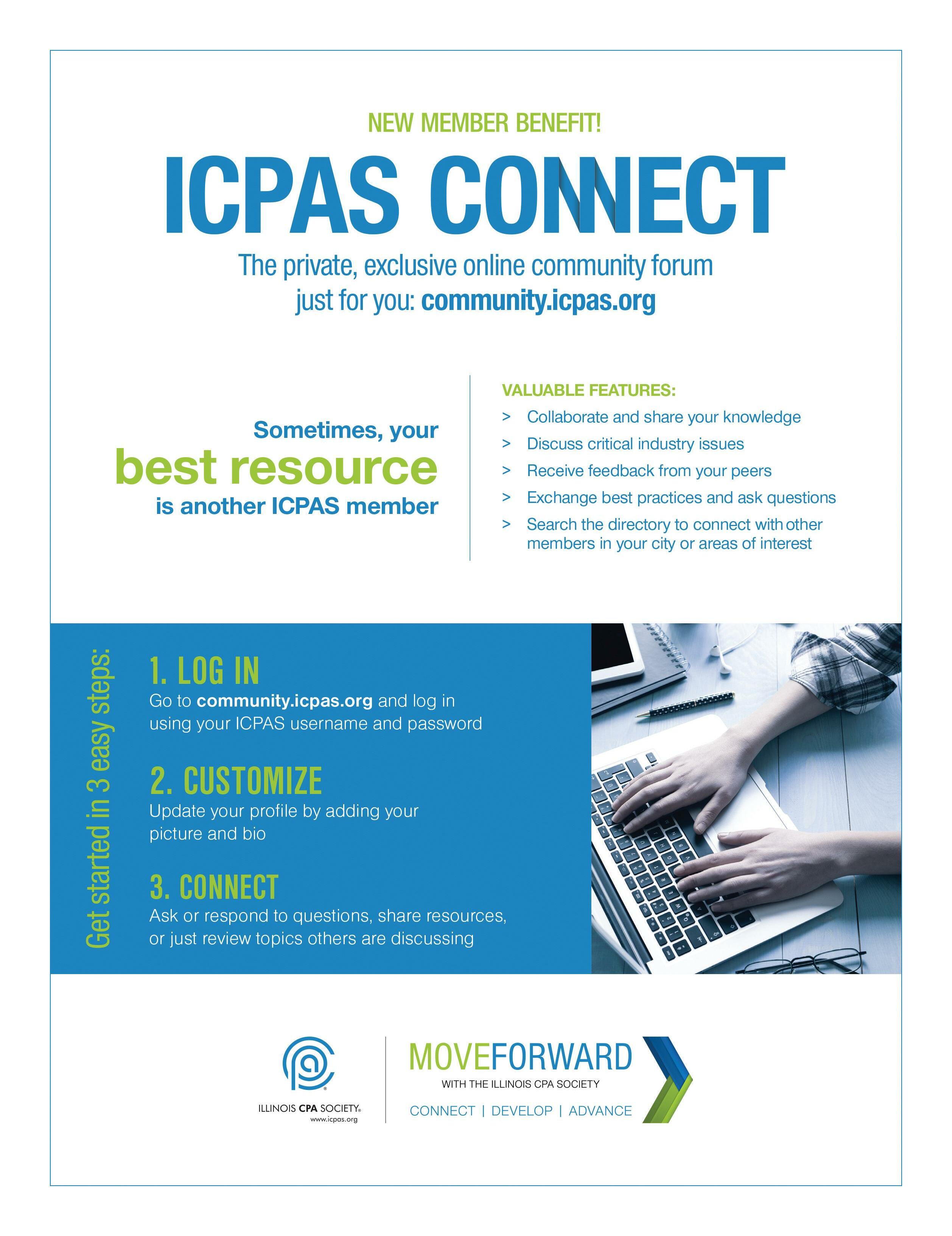
Hurt of Harassment
When workplace harassment goes overlooked, victims and organizations suffer the consequences
BY CLARE FITZGERALD
Sexual harassment cases in the entertainment, media, and political spheres have dominated headlines recently, but workplace harassment has long been pervasive across industries, especially in traditionally male-dominated fields. And accounting and finance hasn’t been an exception
As the #MeToo and Time’s Up movements bring renewed attention to sexual harassment and gender inequality, organizations across America are working to root out the attitudes and mentalities that drive hostile and inappropriate behavior. But they’ll need to do more than update anti-harassment policies to do that Creating safe environments for employees also requires understanding the psychology of harassers, addressing power disparities that commonly drive workplace harassment, and fostering cultures of trust and respect
INTIMIDATION GAME
The U.S. Equal Employment Opportunity Commission defines sexual harassment as unwelcome sexual advances, requests for sexual favors, and other verbal or physical conduct of a sexual nature that explicitly or implicitly affects an individual's
employment, unreasonably interferes with an individual's work performance, or creates an intimidating, hostile or offensive work environment According to Eugene Hollander, a Chicagobased attorney with experience in sexual harassment cases, behavior that constitutes sexual harassment can range from seemingly harmless sexual jokes or comments to aggressive groping, touching, or displaying pornographic images in the workplace and everything in between
Harassment can occur anywhere, by anyone, in any organization. What many employers also mistakenly overlook is that they can be held liable for harassment experienced by employees from someone outside of their organization, such as vendors or clients
But in most workplaces, harassment is driven by and revolves around an imbalance of power, according to Dr Jessica Lippman, a Chicago-based clinical psychologist “The perpetrator holds the key to moving up, so the victim’s choices are either to submit and be exploited to advance, or resist and risk not advancing or facing retaliation,” she explains, noting that women are the victims in most harassment cases. “It’s a lose-lose situation.”

12 INSIGHT | www icpas org/insight
P R O F E S S I O N A L I S S U E S
Often, harassment starts in a non-threatening manner but escalates quickly into aggressive behavior “The perpetrator sees the victim as being vulnerable He might start by complimenting her work and offering to help with her career. Perpetrators make their victims feel special It’s all part of the seduction They often are very charming, and they use that charm to manipulate,” Lippman says
In addition to having manipulative personalities, Lippman says narcissism is a common trait among sexual harassers. “They have an inflated view of themselves and their talents, and they can’t understand why anyone wouldn’t welcome their advances,” she says. “They have an enormous sense of entitlement, but also a deep need for approval It’s the narcissist’s secret that they need to defend against not being special at all costs ”
Because they see themselves as special, sexual predators often have a Machiavellian attitude; the means justify the ends, which allows them to disengage morally and find ways to justify their behavior, Lippman explains Another common trait is a lack of empathy “They are dismissive of other people’s feelings and careless toward their victims,” she says
But power is their ultimate weapon, and they are driven by a desire to dominate and control Knowing that they hold power, Lippman says harassers won’t hesitate to disparage anyone who calls them out as inappropriate And in the past, perpetrators in positions of power knew that they wouldn’t get called out “People are obedient to authority,” Lippman stresses. “They may not like what’s going on, but in many cases, they won’t do anything to stop it ”
BAD BUSINESS
Harassment can be a festering problem, and the effects on employee morale and productivity can be devastating to business Toxic environments increase workplace stress, and often lead to increased absenteeism and turnover. Despite increasing pleas for action, many victims would still rather leave than report being harassed. “Victims don’t want to be labeled, ignored, or not believed So, they suck it up and it affects their performance, or they leave, because they know they can’t work in such a hostile environment,” Lippman explains.
In addition to the human costs, reputational and financial risks to organizations can be steep. According to Hollander, a variety of damage claims can be brought in a sexual harassment case against an employer, such as pain and suffering, mental anguish, and compensatory damages, which can quickly add up to costly payouts And although compensatory and punitive damage awards in federal sexual harassment claims are capped, state claims are not If a victim brings a negligent supervision claim, for example, and the facts suggest that an employer knew about the harassment and swept it under the rug or did nothing to stop it, a company could face a federal sexual harassment claim and a state claim “A jury could award hundreds of thousands of dollars in such cases, and that can be crippling for many businesses,” Hollander warns
ZERO TOLERANCE
Employers are responsible for maintaining a safe environment and protecting employees from any behavior that could cause physical or psychological harm Plante Moran, a Midwest-based accounting, tax, and consulting firm, refers to that responsibility as creating a “jerk-free culture,” according to Diana Verdun, director of human resources “We want to create an environment that shouldn’t and doesn’t have problems with workplace harassment,” she says,
noting for Plante Moran, achieving that goal starts with hiring people who fit in with the firm’s culture and values
Strong anti-harassment policies, clear reporting mechanisms, and comprehensive training also are key to ensuring that employees understand what constitutes harassment, how to report it, and the consequences of any inappropriate behavior. Plante Moran includes workplace harassment training as part of its onboarding process and incorporates more advanced training as people move into managerial and supervisory roles. “We educate our people on this topic throughout their careers, so they know how to manage through any issues and how to handle any concerns,” Verdun explains
Maintaining an atmosphere where people feel comfortable talking about sensitive topics also is important “We always try to acknowledge that the whole person comes to work, and that people have things on their minds that they should feel comfortable talking about We don’t want people to think they have to check their concerns at the door,” Verdun says. “Building an environment of trust gives people confidence that any concerns they have will be taken seriously and investigated ”
Although organizations need to have clear codes of conduct, rules will always be broken As Hollander notes, “The world is made up of all sorts of humans, and people are still going to do what they’re going to do.”
That’s why employers need to be prepared to take immediate action if an issue does arise “Anti-harassment policies are important, but they need to have teeth,” Lippman says “Companies can host town hall meetings and talk about values, but people have to see what they’re saying isn’t just rhetoric. Women have to feel that they will be heard, that their claims will be investigated, and that there will be consequences if someone crosses the line Companies need to show that harassment won’t be tolerated, and they need to be clear about what will happen if they find out that an employee is being harassed And it can’t just be a slap on the wrist ”
Plante Moran adds weight to its zero-tolerance policies with support from the top “If evidence shows that someone at our firm is doing something that falls into ‘jerk’ behavior, then that person simply will not be with the firm anymore, regardless of his or her position Public accounting firms have many owners, and it’s important that they all agree with that philosophy ”
Ultimately, though, policies and education can only go so far Eliminating hostile attitudes and power imbalances in corporate America will mean promoting more women into the executive ranks. The accounting and finance industry continues to struggle on that front, leaving it vulnerable to reputational harm if change isn’t made Plante Moran and many other notable firms have instituted women leadership programs and have increased their numbers of female partners Many are also working to highlight the benefits of a diverse workforce, but there’s still progress to be made in this profession
“We need to understand the value of the differences that people bring,” Verdun says. “While we work really hard at getting this right, we’re always learning from our staff and others in the marketplace to ensure we’re continuing to improve in these areas It all comes down to respecting each other as humans and creating environments in which everyone can excel.”
www icpas org/insight | SPRING 2018 13
Remote Possibilities
With more workers wanting to telecommute, it ’ s time to address the ins and outs of managing remote employees
BY KRISTINE BLENKHORN RODRIGUEZ
What does the typical telecommuter look like to you? You m o s t l i k e l y e n v i s i o n e d s o m e o n e q u i t e y o u n g , h e a d p h o n e s o n , Starbucks at hand, dressed for lounging instead of business, right?
While you might be right sometimes, you’re also oh-so-wrong The typical telecommuter is 50-plus years of age a salaried, college-educated, non-union employee, according to Global Workforce Analytics (GWA)

Surprised? Don’t be; already roughly one-in-four workers telecommute, and half of the U.S. workforce holds jobs that are at least partially compatible with remote work arrangements.
In 2016, 1 5 million Illinois residents worked at home at least half of the time, not including the self-employed And GWA says regular work-at-home arrangements among the non-self-employed p o p u l a t i o n h a v e g r o
nearly 10 times faster than the rest of the workforce
It’s not just worker preference or work-life balance trends fueling the rush towards remote work; business benefits include happier employees, employee savings of $2,000 to $7,000 annually, and
, according to GWA.
While remote work promises big benefits, it also brings new business challenges, changing the way teams interact and deliver results.
COMMON CHALLENGES
Moving from the traditional face-to-face work environment to a remote model has its nuances, but handled skillfully, the benefits far outweigh the challenges below
Management styles. Many seasoned leaders will have to rethink and change their management styles to be successful in remote working environments “They’re used to managing face time and now they must instead manage productivity without it,” says Janice Aull, owner of performance improvement facilitation firm Aull About U “In remote working environments, the emphasis is less on relationships and more on outcomes ”
Trust is a major predictor of managerial success in remote work environments “Some leaders are naturally trusting; others are distrusting. It’s a continuum. But we’ve found trust, more than anything else, predicts distributed leadership success,” says Dr Laura Hambley of Work EvOHlution, an industrial psychology firm that develops assessments and profiles for distributed work situations.
14 INSIGHT | www icpas org/insight E M P L O Y E E B E N E F I T S
w n n a t i o n a l l y b y 11 5 p e rc e n t s i n c e 2 0 0 5
,
a n n u a l s a v i n g s o f $ 11 , 0 0 0 p e r p e r s o n f o r a t y p i c a l b u s i n e s s
employees are slacking off, the opposite is often the problem Because home has become “the office,” many managers, and even their employees, take advantage of that fact
Sending weekend or late-night emails with expectations of immediate responses is inappropriate, Aull says, unless that has always been part of the job “Management needs to set expectations for hours of work availability Otherwise, it’s far too easy for work to bleed into personal time, which makes most employees less productive instead of more productive ”
Technology troubles. Even if a company provides each employee with a basic at-home technology package to ensure consistency, usability is not guaranteed “As an employee, you have to create self-directed learning for the technology that will make it easier for you to do your job from home or wherever you may be,” Aull says Continuous learning and a continuous growth mindset are key to success, and sometimes so is a contingency plan
“Having a Plan B is essential for day-to-day success,” Hambley adds “Technology can be iffy What if connectivity breaks at the start of a conference call? Where does everyone reconvene virtually? These are the kinds of issues many team leads still don’t plan for and they can reduce productivity ”
Communication conflicts. “In a remote environment, if you don’t have the right tools and policies, people can become really good at getting their stuff done but not very good at collaboration Team effort still matters,” says Kevin Eikenberry, owner of The Kevin Eikenberry Group, a leadership and learning consulting company that provides training, consulting and coaching services to organizations He emphasizes it’s not just a matter of choosing the right collaboration technology tools but also encouraging communication amongst team members.
The ability to choose the right communication medium at the right time is a skill worth teaching employees, according to Hambley “Remote working promotes an over-reliance on email But, there are times when picking up the phone is better. Or, when a video call to see body language and facial cues trumps just audio,” she explains. “The better teams get at discerning what works for different types of situations or personalities, the better the team dynamic.”
FRONTLINE FINDINGS
While expert observations are helpful, nothing beats hearing from those in the field trying to make remote work, well, work.
National Equity Fund. Gaylene Domer, VP of Facilities Management, notices less stress amongst employees during her company’s usually very hectic March through November deal-making timeframe. Employees say it’s because they can now work from home a couple of days per week: they save time commuting and are better able to keep work-life balance despite the frenzied pace of business.
“Turnover has gone from 8 percent to 4 3 percent in four years, a n d w e ’ r e a t t r a c t i n g n e w e m p l o y e e s a t a b e t t e r r a t e , ” D o m e r explains. “People admit that they’ve been offered more money e l s e w h e r e b u t t o o k t h i s j o b b e c a u s e o f t h e f l e x i b i l i t y r e m o t e work offers them.”
What’s more, with 93 of 176 employees now participating in the work-from-home program, Domer says National Equity Fund was able to save $2.5 million over the course of its office lease.
Domer admits that winning over senior managers was crucial to making the program successful. “I urged our senior managers to
take their work-from-home days because otherwise team members wouldn’t. It wasn’t so hard once our CEO started to do it. He has been a champion from day one.”
N o d e S o u rc e . J o e M c C a n n , f o u n d e r a n d C E O , s a y s h e h a d a n epiphany about remote working arrangements while sitting in an A m s t e r d a m c a f é “ I w a s w o r k i n g f o r a l a rg e s o f t w a r e f i r m a s a developer on a contract basis I was in a great café in Amsterdam, enjoying life and work, and I thought, ‘This is the way it should be.’ Something had to give. People are fed up with long commutes, lack of time with their kids, inflexible schedules. I went from Wall Street and corporate America to a life that included work but was not all work, all the time ”
M c C a n n t u r n e d h i s e p i p h a n y i n t o N o d e S o u rc e , a c o m p l e t e l y remote company from inception: “We are distributed by design I f y o u s t a r t d e c e n t r a l i z e d , y o u r D N A i s t h e r e Yo u d o n ’t h a v e a l l t h e i s s u e s o f t r a n s f o r m i n g l a rg e c e n t r a l i z e d s y s t e m s i n t o workable, agile systems.”
“A nine-to-five workday is irrational and archaic,” McCann continues “Some of my software developers do their best work at 2 a m I am most productive at 5 a m I hire people who deliver in part because they do their yoga midday, have brunch with their uncle every Wednesday, whatever They get to design their day as long as they continue to deliver ”
B r o a d Pa t h H e a l t h c a r e S o l u t i o n s . A w h o p p i n g 9 6 p e rc e n t o f C E O D a r o n R o b e r t s o n ’s r o u g h l y 1 , 4 0 0 e m p l o y e e s w o r k f r o m home Robertson says BroadPath went “all-in” on a remote model not only to help employees, but because it allows the company to better serve clients
The company uses Beehive, a self-developed remote management and collaboration technology that allows employees to see and interact with each other. “A big problem with hybrid deployments is that remote workers feel left out,” Robertson explains.
Beehive also is used to also facilitate the workplace fun remote workers would normally miss “For example, we are launching a r e m o t e i n s t r u c t o r- l e d f i t n e s s p r o g r a m w i t h y o g a c l a s s e s f o r employees Think fitness challenge for at-home workers, but they do it together in real-time Lots of brick-and-mortar companies h a v e t h e s e o n s i t e , b u t f e w s e e m t o o f f e r t h e m t o h o m e - b a s e d workers,” Robertson says.
Pizza day where pizzas are delivered at the same time to workers on a team allows workers to still have face time together during lunch, joking and laughing despite being miles away from each other Crazy hat day is another employee favorite, according to Robertson “It’s about developing connection, in the end And it helps my leaders better manage their teams,” he says.
Broadpath’s results so far? Attracting higher caliber employees, producing higher quality work, lower attrition, and lower costs
CALLING IT
Te
p l o y m e n t g r o w t h f o r telecommuters has outpaced non-telecommuters year-over-year for more than a decade. Remote working arrangements are not a fad, but rather a way for companies to maintain productivity and profitability in an era where workers simply don’t want to be tied to a traditional office environment
e m p l o y e e s t o focus on accomplishment, not activity,” Eikenberry says. But the millions of dollars saved in office space and higher retention rates don’t hurt either.
www icpas org/insight | SPRING 2018 15 “ D i s t r u s t f u l t y p e s m i c r o - m a n a g e , w h i c h w r e a k s h a v o c i n a n y working environment but particularly in a remote one ” Wo r k - l i f e i m b a l a n c e s . W h i l e d i s t r u s t f u l m a n a g e r s w o r r y t h e i r out-of-sight
i n
h
e n t h i s
o r y i s a n y
A t i t s b e s t , t e l e c o m m u t i n g f o rc e s “ l e a d e r s
l e c o m m u t
g ’s g r o w t
i s u n l i k e l y t o s l o w, l e t a l o n e s t o p , i f r e c
t
i n d i c a t i o n e m
a n d
Cashing in With Tax Reform
Tax law changes make early saving for education expenses all the more enticing.
 BY MARK GILBERT, CPA, PFS
BY MARK GILBERT, CPA, PFS
Among the many savings and investment vehicles students and parents can use to finance education expenses think Coverdell Education Savings Accounts, Roth IRAs, and U S savings bonds the most popular plans just got a shot in the arm thanks to tax reform
Around since 1996, 529 plans, or “qualified tuition plans,” are taxadvantaged savings plans sponsored by states, state agencies, or educational institutions, and authorized by Section 529 of the Internal Revenue Code, to encourage education saving.
The Tax Cuts and Jobs Act of 2017 introduced some important changes to 529 plans that should only further their popularity Here are the highlights and some practical ideas for implementation and use
EXPANDED USE
529 plans come in two types: (1) prepaid college tuition savings plans, and (2) defined contribution-type account balance plans, which are funded with “after-tax” contributions. 529 plan contributions grow on a tax-free basis, much like in a Roth IRA, and withdrawals remain tax-free if used for qualified education expenses.
Previously, “qualified education expenses” meant only certain college-related expenses Now, the law permits up to $10,000 per year of tax-free withdrawals from 529 account balance plans to cover tuition and fees of public and private elementary and secondary schools.
This is a dramatic expansion, which allows 529 account balance plans to essentially replicate or replace Coverdell Education Savings Accounts (ESAs) While annual contributions to Coverdell ESAs are limited to $2,000 per child, annual 529 plan contributions max out at the gift exclusion amount of $15,000 per donor per child, or $75,000 if “front loading” five years’ worth of contributions, a prudent estate planning strategy often used by grandparents.
It’s my hope that the expanded use of 529 account balance plans will encourage families to start saving earlier in a child’s life. With education costs continuing to rise, the more time allowed for contributions to grow prior to withdrawal, the better
I generally recommend funding 529 plans for college to cover about 66 percent of the anticipated total expense, with the remaining 33 percent coming from other savings, investments,
16 INSIGHT | www icpas org/insight P E R S O N A L F I N A N C E
current cash flow, and scholarships or financial aid. For families wishing to send children to private elementary or secondary schools, I believe funding a 529 plan account to cover 100 percent of the qualified costs is best because the availability of scholarships and financial aid is more limited Additionally, any unused 529 plan funds can be used for college or another child’s education. How should 529 plan funds be invested? As you would with your retirement savings, you must consider risk tolerance and time until funds will be withdrawn to form a reasonable investment strategy. While each family’s situation is unique, I often recommend an agebased methodology: the youngest child’s account is invested heavily in equities while the oldest child’s account is invested more in bonds and cash. When investing for elementary and secondary school, the same philosophy holds the shorter time frame until need means these accounts should be in fewer equities and more in stable income vehicles I also recommend setting up separate accounts for each child’s college, elementary, or secondary education expenses to better manage the funding goals
COVERDELL ESAs ELIMINATED
Thanks to the new tax law’s 529 plan expansion, Coverdell ESAs are essentially obsolete In fact, lawmakers have ruled 529 plans to be the superior education savings vehicle and have eliminated the option of new Coverdell ESAs Why would they do this? First, as noted earlier, 529 plans benefit from having higher contribution limits Second, there’s no age limit on disbursing 529 plan funds, whereas Coverdell ESA funds must be disbursed by the time the child or beneficiary reaches age 30 The only downside of this
move is that 529 plans generally have limited investment options whereas Coverdell ESA funds could have been invested in nearly any publicly traded security
So, what now? I recommend existing Coverdell ESAs be rolled over to 529 plans to obtain the more generous benefits
ABLE OPTIONS


ABLE, aka Achieving a Better Life Experience, accounts were created by 2014 legislation designed to assist individuals with disabilities These accounts are similar to 529 plan accounts in that they can receive a maximum after-tax contribution of $15,000 per year and grow on a tax-deferred basis that becomes tax-free if used for “qualified disability expenses ” These qualified expenses include education, housing, transportation, health care, and financial management to improve the quality of the disabled beneficiary’s life The primary benefit of the ABLE account is that a wide range of expenditures can be made, and assets accumulated, without disqualifying the disabled beneficiary from various public service benefits like Social Security, Medicaid, and SNAP (“food stamps”). Thanks to tax reform legislation, 529 plan accounts can now be rolled over to ABLE accounts This is a great benefit for families who have funded 529 plan accounts for children who later became disabled and are unable to attend college.
The new tax law has set forth several changes that surely will increase the popularity and usability of 529 plans. Whether for your family’s own benefit, or for your clients’, I encourage you to further familiarize yourself with the nuts and bolts of these savings plans that can drastically improve future finances
www icpas org/insight | SPRING 2018 17
Turning Tax-Time Clients Into All-Time Clients
It ’ s prime time for CPAs to turn their seasonal clients into year-round revenue generators.
BY JEFF STIMPSON
CPAs certainly hear a lot from their clients during tax season, but how can they transform this seasonal flood of tense traffic into a steady stream of year-round revenue? It’s quite simple, really The best way to turn seasonal clients into year-round clients is to sell them on added services by consistently communicating your value and benefits
Naperville, Ill -based accounting, tax, audit, and advisory firm Sikich, for instance, makes it a point to hold specific in-person client meetings at the end of each year. “These meetings serve several purposes,” says Illinois CPA Society member Louis Sands, CPA, JD, a managing director in Sikich’s accounting, audit, and tax practice. “First, they allow us to build stronger relationships with clients and get to know them on a more personal level Second, meeting at the end of the year allows us to uncover information that can help us better plan for the upcoming tax season, make any necessary end-of-year changes, and talk about longer-term plans and strategies ”
In fact, a renewed focus on tax strategies and financial planning, thanks to the Tax Cuts and Jobs Act of 2017 (TCJA), is likely to be a boon for CPAs and other advisors hoping to build better connections with clients in the year ahead.

“Since the passing of tax reform, we’ve had an unprecedented surge in client conversations,” says Charles “Chuck” McCabe, president and CEO of Richmond, Va -based Peoples Income Tax and The Income Tax School in Glen Allen, Va “Everybody is interested in learning how the new tax law will impact them.”
CHANGE IS OPPORTUNITY
“The key with something as omnipresent as the new tax law is to be proactive and understand how it applies to your clients before they call you,” Sands says “Reform is being talked about all over, and people are hearing different, sometimes contradictory, advice. Your clients are relying on you ”
This presents a unique opportunity for CPAs to showcase their expertise by providing clients with much-needed information and tips, McCabe suggests, which could ultimately spur them to seek you out for other services, like payroll, financial services, or taxpayer representation
Many Sikich clients, for example, are closely held businesses “The top things we’re discussing with these clients are the 20 percent potential deduction for pass-through entities, the prepayment of taxes, and suspension of many applicable deductions,” Sands explains.
18 INSIGHT | www icpas org/insight P R A C T I C E M A N A G E M E N T
“One of the biggest changes brought by the TCJA involves the calculation of qualified business income,” adds Illinois CPA Society member Mark Heroux, JD, principal in the tax services group at Baker Tilly in Chicago. “Many of our clients are passthrough entities, and the TCJA provides a new scheme for taxing these. The rules are complex, have uncertainty, and pose risks and opportunities ”
TCJA changes affecting repatriation of offshore income is another topic raising a lot of questions and confusion “Don’t be hasty with your conclusions there are different options available to taxpayers who might want to repatriate income, and modeling these options is a must before making decisions,” Heroux says, suggesting this is another area CPAs can use to drive value-added services and discussion
The point is to show that you’re an expert, that your services are scalable, and, most importantly, that you want to serve clients beyond what they’re already coming to you for
COMMUNICATION IS CRUCIAL
Whether your forte is offering tax reform insight to corporations or maximizing an individual’s income tax savings, one of the best ways to determine additional services you can offer to benefit your clients is to, quite frankly, ask them “Surveys and Q-and-As are easy, inexpensive ways to secure useful client feedback and information,” Sands says.
That said, McCabe recommends limiting surveys to about 10 questions and offering appealing incentives to complete the survey if it’s not directly related to a service just provided And don’t neglect post-engagement feedback, which is crucial for client service and business development
Following client engagements, Baker Tilly’s dedicated client services director conducts satisfaction assessments through a mix of direct telephone calls, client visits, and web-based surveys, according to Thomas Walker, CPA, JD, the firm’s Chicago-based regional managing partner.
“We verify that we’re delivering on the commitments we made, and that clients’ needs and expectations are being met,” he says, explaining that all documented client feedback is shared with the engagement team and partner
“Additionally, we utilize Huddle, a cloud collaboration software,” Thomas says “Huddle allows for secure collaboration anywhere, anytime, and on any device, making it easy for our internal teams and clients to come together, share and edit files, assign tasks, and track activity in a secure environment This investment in technology supports real-time communication both internally at Baker Tilly and with clients and provides a seamless trail from initial planning through the final financial statement issuance.”
TIMING IS EVERYTHING
When going beyond service and engagement communications, it’s important to consider how, and how often, to communicate with clients In his book, “Guide to Start and Grow Your Successful Tax Business,” McCabe urges writing to every client at least once a year, and clients with complex tax situations and small business owners should receive formal communications at least two or three times a year The letters should act as reminders that you’re available to serve first and foremost, but they also should summarize any changes in your practice that could potentially benefit your clients and any economic or regulatory developments that could affect them
Email newsletters, website or blog posts, and social media posts also are effective communication tools you can use more frequently
to drive awareness of your services, news and information of interest to clients, speaking engagements, important filing dates, referral offers, and much more These informal communications should be easy for clients and potential clients to understand and share After all, “A referral from a current customer is the number one way to secure new clients,” Sands notes
Baker Tilly, for instance, promotes its complimentary educational content, including seminars, roundtables, live and on-demand webinars, and targeted industry newsletters and alerts, through these channels “Both clients and prospective clients have access to these through our website and by signing up for our mailing list,” Walker says. “Education allows our firm and our professionals to stay in front of our client base on a regular basis while providing them with timely information ”
THE PAYOFF
“Take the long view on every client and strive to build relationships as opposed to transactions,” Walker encourages “ROI is not the only metric of success. Rather than weighing potential fees against hours required, we constantly ask ourselves how we can better understand our clients’ businesses and therefore identify additional areas where we can add value.”
Converting seasonal clients into year-round clients is a process
It takes effort. It might even take getting new certifications or learning new practice areas But diversifying and cross-selling year-round services that complement your core offering, and effectively communicating about them to current and prospective clients, will undoubtedly open new business development and retention opportunities

www icpas org/insight | SPRING 2018 19 E xperiencing: • Stress? • L ack of Sleep? • IRS induced Nausea? We have helped thousands sell... and WE CAN HELP YOU! Ta x Se as on Cessation Pro gram Trent Holmes 800-397-0249 Trent@APS.net www.APS.net D e l i v e r i n g R e s u lt sO n e P r a c t i c e At a t i m e
April 1, 2017 - March 31, 2018
$105,000
Jovencio & Violeta Mangahas
$65,000
Dempsey J Travis Foundation
$15,000
Deloitte LLP
$10,000
Abbott Laboratories





Crowe Hor wath LLP
Illinois CPA Society
nois CPA So Washin r tuni
Mega “My d with A natura bit. Th helpe maste my CP gratef
$ 00 awarded 60 scholar ships ,000 donor s
$500 - $999
Jason Parish
Amanda Pictor
President ’s Paver s
Bill Graf
Sheldon Holzman
Kenneth & Jacqueline Hull
ICPAS O'Hare Chapter
ICPAS Women's Executive Committee
Stacy Janiak
John E & Jeanne T Hughes
Charitable Foundation
Kenton Klaus
Dave & Darlene Landsittel
Scott Lehman
Sara Mikuta
Elizabeth Murphy
Morris Oldham
Belverd Needles, Jr & Marian Powers
$5,000
Edilber to & Carmelita Or tiz
$1,000 - $4,999
Anonymous
Alverin M Cornell Foundation
Maria Fides Balita
BKD Foundation
Howard Blumstein
Mar trice Caldwell
Rose Cammarata
Cameron Clark
CNA Foundation
Joseph D'Amico
Lindy Ellis
Ar thur Farber
Follett Corporation
William Gif ford, Jr
Mark Glochowsky
Lee Gould
Beth Pagnotta
Floyd Perkins
Melody Ragan
Kim Rice
Deborah Rood
Stella Marie Santos
J Bradley Sargent
Todd Shapiro
Elizabeth Sloan
Scott Stef fens
Duane Suits
Myra Swick
Catherine Villinski
Kimberley Waite
Connie Watkins
Jef fer y & Julie Watson
Mar y Ann Webb
Cher yl Wilson
Wipfli Foundation Inc
Lawrence & Nancy Wojcik
Donna Zarcone
Anonymous (3)
Brent Baccus
Peter & Natasha Granholm
Sharon Gregor
Lisa Hanlon
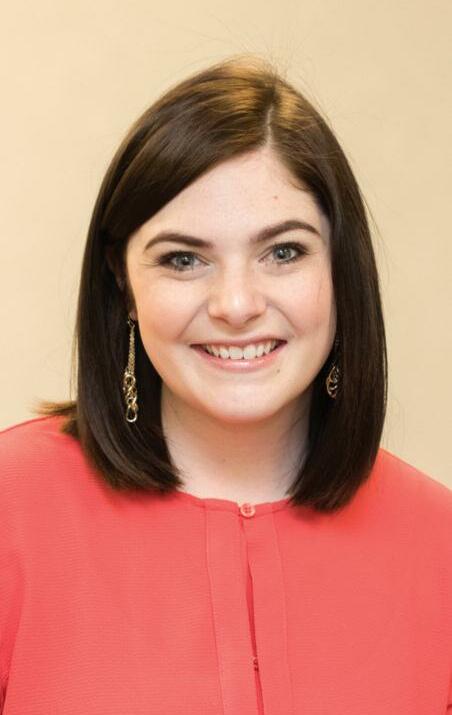
Geof frey & Virginia Harlow
Lisa Har tkopf
Margaret Hickey
ICPAS Central Chapter
ICPAS Young Professionals Group
Illinois Tool Works Foundation
Donald Kieso
Anne Kohler
Thomas Mur tagh
Stephen Nor th
Annette & Tom O'Connor
Jennifer Roan
JoAnna Simek
Richard Thompson
$250 - $499
Anonymous
Bolanle Babatunde
Terr y Bishop
Genevieve Burns
Rebekuh Eley
Stephen Ferrara
Mar y Fuller
Rober t Giblichman
Lawrence Gill
Marla Gordon
Gar y Har t
Trudie Kanter
Wendy Kelly
Jef frey Krol
Richard & Donna Loraine
Dave Luzi
L James Margner
Rita McConville
Miller Verchota Inc
Kenneth Posner
Prado & Renteria CPAs
Dan Rahill
Deborah Ringer
Joan Rockey
John Rogers
Elizabeth Roghair
Katherine Scherer
Michael Singer
Gerard Swick
Marites Sy
Meredith Vogel
Adriane Wong
Kevin & Karen Wydra
$100 - $249
Anonymous (8)
Sheldon Abrams
Annabelle Abueg
Michael Amoroso
John Baily
JoAnn & Bob Benzer
Joseph Bigane, III
Brian Blaha
Roslind Blasingame-Buford
Bruce Breitweiser
James Brennan
Elizabeth Buf fardi
M David Cain, Sr
Margaret Car tier
Vilma Chan
Bridget Coleman
Har vey & Arlene Coustan
Joseph Cvinar
Michael & Beverlee Dallmann
Jon Davis & Heather Pesch
Jim Dickey
James Dolinar
Melody Driver
Amy Dybowski
Kimi Ellen
Jonathan Hauser
Melinda Henbest
Julie Her witt
Angela Hickey
Kathy Hor ton
Eileen Iles
James Johnston
John Kaiser, Jr
David Kalet
Deanna Kanosky
Jason Klein
Kristina Kor win
Beth- Anne Lang & Lillie Miller
Paul Lau
Cher yl LeeVan
Sara Leone
Dianne Lystlund
William Malsch
Ted Mandigo
Randy Markowitz
Kenneth & Kathleen Naatz
Rebecca Newton
William O'Neill
Charles Phillips
R Bruce Pickens
Elizabeth Pittelkow
Michael & Noreen Potempa
Ernest Potter
James Quaid
Roy Raemer
Elliott Robbins
John Saladino
Jennifer Schultz
Richard Shapiro
Edward Slack
Christine Smith
Laurence Sophian
Michael Tadla
William Taylor
Huber t Thomas
John Tolar
Andrea Urban
Jay Wilensky
Carl Woodard
Doyoung Yong
Kenneth Yu
Anthony Zordan
UP TO $99
Anonymous (6)
John Abernethy
Sandra Adam
Angela Agnew
Keshav Agrawal
Rao Akella
Jude Alagna
Omar Alaskari
Andrew Alexander
Alonzo Allen
Alan Allphin
Paul Alpern
Daniel Ammentorp
Jennifer Anderson
Susan Anderson
Steven Andes
Wayne Barcheski
Ar thur Barrett
William Bar ta
Richard Bar tell
Jens Bauml
Mr & Mrs Gerald Bayer
Charles Baygood
Dennis Beard
Chris Beaulieu
Kylie Bechtold Bashir Bello
Benchmark Aspen & Associates Ltd


Cur tis Bennett
Donald Bennett
Peter Bensen
John Berg, Jr
Jordan Berger
Dana Berglind
Denise Berkin
Howard Bernstein
Kenneth Ber trand
Jeannine Cohn Best
Rona Bezman
Chester Biel
Lydia Bilyeu
John Blackburn
Michael Blakeman
Carla Blanchard
William Bledsoe
David Blum
Mark Blumenthal
Sarah Ann Bohnsack
John Bone
Basil Booton
Rober t Boscacci, III
Gar y Bowen
Mar y Bowman
Rober t Brackett
Thomas Brandt
Jennifer Braswell
Thomas Breecher
Thomas Brescia
Mar y Bresson
Steven Brewer
Thomas Broderick
Marcia Brown
Michael Brown
Scott Brown
Terrence Brown
William Bruno
Joseph Br yk
Alber t Buabeng
Kymberly Buchanan
Kenneth Bunce
Teresa Burczak
John Burghout
Timothy Buzard
Carrie Byers
Nicholas Caccamo
Joseph Callahan, Jr
Paolo Camoletto
Paul Caponigri
Dariusz Caputa
Karen Carlos
Mur thy Cherala
Scott Cheshareck
Rober t Chicoine
Christopher Childs
Rajeev Chopra
Chiu-Yeung Chow
Ronald Cierny
Eleanor Clanahan
William Clark
Marsha Clesceri
D Close
Susan Coats
Brian Coderre
Herber t Cohen
Janice Coker
Jay Colber t
Joan Comfor t
Kevin Conarchy
Christopher Conneely

Carolyn Coonce
Joseph Cordell
Alan Cornue
Michelle Cozzini
Marcia Craig
Diane Cranmer
Anne Cummings
James Cunningham, Jr
Kevin Currid
Edwin Czopek
Czeslaw Czubik
Brian Dahly
John Dai
James Dale
Angie Dallam
John Daly
Christopher D'Andrea
Donald Danner
Antonio Davila, Jr
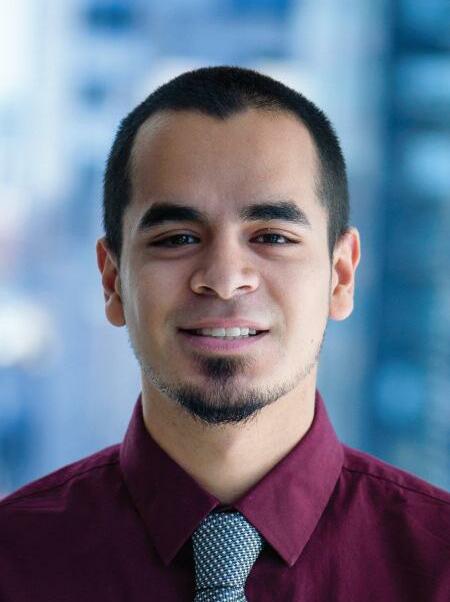
Mark Davis
George De Heer
Paul DeFiore
Deborah DeHaas
Alan DeMar
James Dempsey
Jennifer Denil
Carla Denison-Bickett
Jenny DeNosaquo- Wilson
Esha Desai
Antonio DeSensi
Thomas DeSimone
Donald Dickinson
Bernard Dickneite
Diane Dillon
Maria Diokno
Toni Diprizio
Melchor Domantay, Jr
Paul Donnell
Angela Dowell
Joel Downie
Patricia Doyle
Mar tin Draths, III
Andrew Dreyfuss
Jeremy Dubow
Richard Duf fy
Gregor y Dunham
Susan Eby
Daniel Ecker t
Susan Edelman
Rolf Eilhauer
Glenn Eisenhuth
Ruth Elbaum
Joe Elber ts
Christopher Elder
William Elliott
Dallie Ellis-Stetson
Rober t Engstrom
Eric Ephraim
Michael Ericksen
Susan Esa
Pablo Espiritu
Paul Estrem
Margie Fabro
Maurice Farbstein
Michael Fehlen
Rober t Feldgreber
Charles Feller
Emily Ferdina
Sarah Ference
Carlos Ferreira
John Ferrentino, Jr
Ralph Fishman
Shari Fitzgerald
Steven Flack
Ronald Flinn
Patrick Flynn
Vincent Forgione, Jr
Kevin Foster
Michael Frank
Thomas Frank
Rober t Fraser, Jr
Thomas Frawley
Mar tin Freeman
Jessica Freiburg
Deborah Froelich
Richard Fugiel
Annette Fulcher
Richard Galloway
Vishal Gandhi
Manish Garg
Daniel Gar tland
James Gavin
Christine Gavlin
Debra Gay
John Gaynor
Ronald Geib
Stanley Ger tzman
Tracey Gibbons
Sheldon Ginsburg
William Gladden
Thomas Glavin
Edward Glazar
Gene Goldberg
Stuar t Goldsand
Mar vin Gollob
Evan Goran-Dr y
Dianne Goren Radtke
Ryan Goulding
Peggy Graf
David Gransee
Alan Gray
Rober t Grecco
Stan Green
Brad Greenberg
Tom Greenway
Steven Greim
William Griswold
David Groeber, Jr
Anne Gromer
Donald Grossman
Jonathan Grossman
Mar y Grossman
Gregor y Grosvenor
Raymond Grothaus
Rober t Grottke
Nancy Grunde
Katherine Gudgel
James Guerra
William Guska, Jr
Mark Guziec
Donald Hacke
Brett Hale
Harold Hale
Terr y Hall
Timothy Hall
Ethel Hall-Langwor thy
M Dean Hamilton
Farid Hanna
Georgann Hanna
Glenn Hardesty
Eric Harkness
Norris Harstad
Patrick Har t
Sharon Har vey
James Haugh
Dennis Hawkins
Rober t Hedrick
Harlan Heller
John Hellner
Steven Henrickson
Marianne Her f f
Rober t Navarro
“Being
re
in this leadership role really forced me to overcome my shyness and helped me have a better college experience. This great oppor tunity helped me discover how much fun it can be to get involved.”
g an ke ar y a a
Joel Her ter
Stanton Herzog
Michael Hickey
Bernard Hicks, Jr
James Hill, Jr
Man Kit Ho
James Hogan
Alpachino Hogue
Russell Holmgren
Jana Holt
David Hooker
John Hopkins


Ilir Hormova
Michael Horst
Murray Hor witz
David Hutchison
Elaine Igelman
Brian Ippensen
Douglas Ir win
Alysa Isaacson
Anthony Isher wood
Kenneth Iwanicki
Joseph Izen
Andrea Izykowski
Jesse Izzo
Jerrold Jacks
Kenyetta Jackson
Michael Jacobson
Ryan Jaeger
John Janas
Ronald Jar vis
Frank Jasek
Michael Jefver t
Mark Jewell
Joseph Jimenez
Charlaina Johnson
Joseph Joyce
Paul Julien
David Jurcenko
Amy Justice
Richard Kaczor
Peter Kaminsky
Vera Kapka
Bur ton Kaplan
Howard Kaplan
Sharad Kapur
Edward Karasek, Jr
Mar ylou Karkow
Barr y Katz
John Kavalunas
Karl Keane
Katrine Keller
John Kent
John Kintner
David Kipp
Hal Kirby
Diane Klocke
Mark Knapczyk
Kathleen Knolhof f
William Knopf
Alfred Koermer
Alicja Kolendo
Br iana Willia
Rober t Kolman
Michael Kolokotronis
Alan Kolosh
Masahiko Kon
Mar vin Kopulsky
Stephen Kosin
James Kostrewa
John Kovatch
Terence Kozicki
Harr y Kramer
Brian Kregor
Steven Kroll
Maria Krull
Treva Kruse
Wayne Krusen
Thomas Kuchta
Michael Kudia
John Kulczewski
Leynette Kuniej
John Kustes
Lawrence Ladner
Howard Lamper t
Ronda Landr y
Tina Langston- Andersen
Edward Lannon
Thomas Larocca
Cher yl Laska
Jef frey Lasky
Stephen Latreille
James Laubinger
Babatunde Lawal
Rober t Lay
Valentina Lazarova
Thomas Lechowicz
Daphne Lee
Shelly Lee
Terr y Leipsig
John LeMay
William Lemna
Debra Lessin
John Levy
Steven Levy
Maurice Lewis
Fan Li
Sicong Li
Peter Liao
Christopher Lilek
David Lilek
Jui-Yuan Lin



Lin Lin
Jonathan Lindh
Paul Lipka
Joel Litman
Mar y Little
Zara Lo
Thomas Lockowitz
Raymond Lombardi
Augustus Lonardi
Larr y Lonis
Lori Lorgeree
Tracey Lowenthal
Richelle Therese Lu
John Lubke
Gregor y Luczak
Donna Lund-Magnus
Lisa Lutz
Mai Luu
Daniel Lyons
Rober t Maas
Thomas Macciaro
Rose Marie Mack
William MacLean
Michael Madden
Dominic Maduri
Louis Mago
Kevin Mahoney
Janet Malone
Daniel Maloney
Lawrence Manelis
Vasliki Manis
Herman Marino
Jennifer Mark
Mark Marosi
Patricia Marzullo
Joanna Maslan
Anthony Massaro
Alan Maty
JoAnn May
Michael Mayo
Melvin Mayster
Joan Mazurek
Andrew McCormick
Margaret McCoy
Jef frey McCutcheon
James McDermott
James McEnerney, Jr
Kyle McGinnis
William McGrane, Jr
James McMahon
Joseph McNeely
James McPhedran
Karen Meades
Nicholas Mechales
Charles Meeder
Neal Mehlman
Antony Meister
John Meister
Richard Meltzer
Gregor y Messing
Terr y Michaels
Anne Mieleszuk
Leonard Miller
Randall Miller
Patrick Miner
Gar y Mingle
Dan Mirjanich
Paul Miscinski
Alber t Mitchell, Jr
James Mitchell
Linda Mitchell
Matthew Mitzen
Lawrence Mocadlo
Ilaria Mocciaro
Megan Mocogni
David Moes
Kevin Mof fitt
Brian Mohr
Cynthia Moody
L Joe Moravy
Karla Morgan
Richard Morris, Jr
Michael Morse
Ernest Mrozek
Carmen Mugnolo
Thomas Mula
John Mulkerin
David Murphy
Emmett Murphy
James Murphy
Vani Sreenivas Mur thy
Craig Myers
Edward Nadler
Jef frey Narcisi
Christine Nardini
Kari Natale
Lawrence Neal
Leonardus Neggers
GJ Neumayer
James Ngai
Vesna Nikolic
James O'Brien
Rober t O'Brien
Amanda Ochsendor f
David O'Connor
Edward Odmark
Michael O'Hara
Joseph Olsen
Ben O'Malley
William O'Malley
Akin Omotosho
James O'Neill
Kevin Ooms
Kirk Openchowski
Karen O'Reilly
Thomas Ottenhof f
Vicki Paavilainen
Rober t Palasz
Heather Paquette
Tai Park
Wayne Parsons
Ruth Patterson
Amy Patton
Whitey Patton
Frederick Paulman
David Pavela
Frank Pavlica
Joseph Pedota
James Peers
William Peluchiwski
Cinda Pembroke
Clair Penner
Rober t Pernini
Linda Perri
Elaine Pesavento
Mark Pesavento
Pamela Peters
Carla Peterson
Kur t Peterson
Ryan Petrey
Marianne Phelan
Dana Phillips
Brent Piechowiak
Samuel Pincich, Jr
Terr y Pitcher
Krista Piwonka
Anthony Polinski
Peter Ponzio
David Post
Paula Pouliot
Walter Powers
Kathr yn Preston
James Pribel
Jay Price, Jr
Clyde Proctor
Todd Prof fitt
Patricia Purpura
Kyle Putnam
Richard Putz
Gavin Quan
Michael Quane
Judith Quedenfeld
Patricia Quinlan
Aran Quinn
Anny Quon
Joel Radakovitz
Randi Ragins
Roy Ramer
George Ranstead
Terrence Raterman
Richard Raupp
William Razzino
Jean Regan
Michael Regan
Stephanie Reicher t
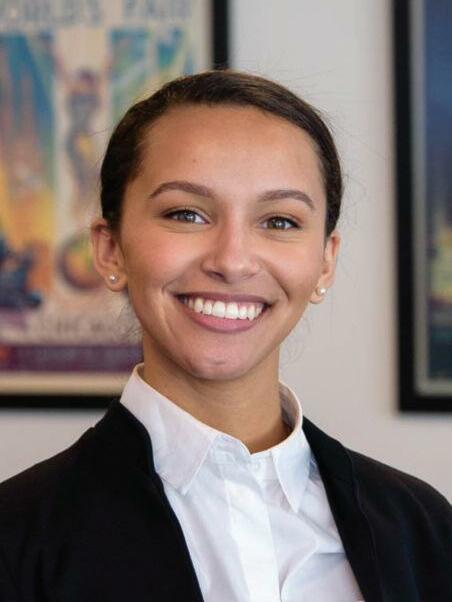
Arnold Reingold
Christopher Reiser
Howard Renner
Eugene Retzer
Gloria Rex
Catherine Riddick
Rochelle Rif fer
Natalie Rinard
Terr y Robbins
Eileen Rober ts
Dennis Robin
Howard Rosell
Lynn Rosen
Nancy Ross
Linda Rossi
Sharmistha Roy
William Rudolphsen
Camille Rudy
Maurice Sabath
Ahsan Sadiq
Kana Sakaide
Jason Samikkannu
Alan Sanchez
Dan Sanchez
Catherine Santoro
Everett Sather
Mar vin Schaar
Elizabeth Schaefer
Margaret Schaefer
Phillip Schaefer
David Schafer
Michelle Schef fki
Rober t Scheuermann
William Schirmang
David Schmeltzer
Laurie Schmidgall
Michael Schneider
William Schneider
Rober t Schoen
Rober t Schroeder
Richard Schultz
John Schur ter
Florian Seidel
Howard Serlin
Michelle Serna
David Shade
Gar y Shadid
Lawrence Shane
Audra Shindo-Chan
Cecilia Siciliano
Barbara Siegel
June Silder
Rober t Silverman
John Simon
John Simpson
Peter Siu
Stephen Slaber
James Slamp
John Sluzynski
David Smith
“Thank you fo helping me o Your suppor t and motivatio impossible, p
William Stahler
John Stanfield
Daniel Stanovich
Linda Stawicki
James Stefo
John Steger
Maurice Steiner
Rober t Stencel
John Stephens, III
Christina Stevens
Lee Stiles, Jr
Howard Stone
Janet Storey
Joni Strand
Michael Szymanski
James Taibleson
Ramya Tallarovic
Angeles Tapia
Miles Taub
Shirley Taylor
Kenneth Thomalla
Jef frey Thomas
John Timmer
Gregor y Tissier
Frank Tlusty
Kathleen Tollaksen
Michele Tomczak
David Towne
Timothy Voncina
Raymond Voros
Gail Vos
James L Vour voulias & Associates LTD


Julie Vuotto
Brandon Wade
Genevieve Waldron
April Walker
Richard Walker
Sherr y Walters
Bradley Walton
Frederick Walz
Monika Warnecka
STUDENTS STILL NEED YOUR HELP
Each year, we have more qualified candidates than awards to give You could help us close that gap Get involved and suppor t our programs to ensure oppor tunities are possible for hundreds of future CPAs.
Prog
rams to Suppor t
These programs inspire and reward deser ving future CPAs:
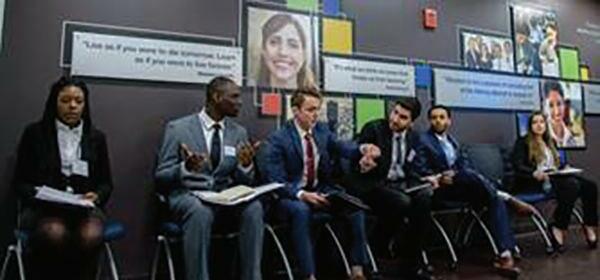
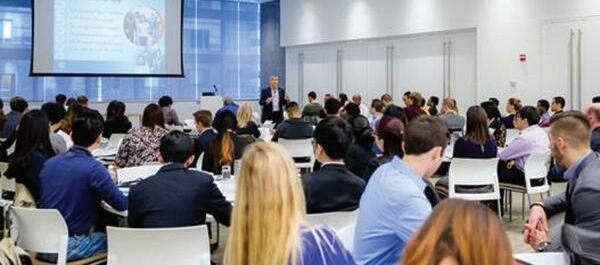
• Tuition & Textbook Scholarships
• CPA Exam Awards
• S tudent Ambassador Program
• Mar y T Washington W ylie Internship Preparation Program
How to Get Involved
• Encourage people you know to apply for the programs
• Volunteer your time and exper tise
• Donate and help fund more prog rams
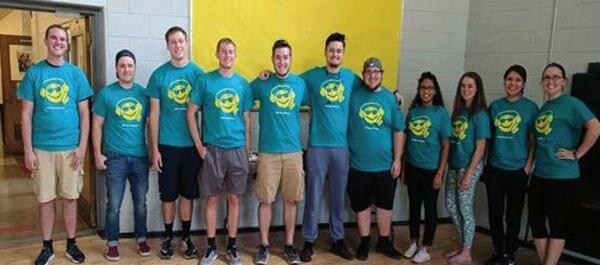
Matthew Warren
David War tner
Jef frey Waters
James Watson
Carolyn Webber
Susan Weber
Sheila Weinberg
Ar vin Weindruch
Harriet Weinstein
Michael Weisberg
Constance Weissman
Matthew Welch
John Wellhausen
John Wentwor th
Darnell Wenzel
James Werner
Glen Wher fel
Barbara White
William White
Richard Whyte
Laura Wilhelm
Richard Wilkens
Kelly Willett
Jennifer Williams
Charlotte Wilson
Michael Wojcik
Agnieszka Wojtowicz
Charles Wolf
David Wolfe
Fred Wolter
Lorna Wolter
William Woolf
Thomas Woulfe
Leiyang Xin



Steven Yang
Rober t Yarbrough
James Yerbic
Frank Young
Carl Yudell
Raul Zarco
Jia Zeng
William Zink
Donors with a multi-year pledge are recognized for the full amount of their pledge in the first year and for their pledge installment amount paid in the remaining years of the pledge Ever y attempt was made to acknowledge all donors who have given during this period If you see a discrepancy, please call 3 12 517 7656
kloot o Jr r
Help make a dif ference: www.icpas.org/annualfund

24 INSIGHT | www icpas org/insight
BY CAROLYN KMET
I n fl u e n c e i s a n i n ta n g i b l e , yet i nva l u a b l e , p e rs o n a l a s s et . I t ’ s a fo rc e s h a p e d by th e i n t ri n s i c va l u e s o f th o s e w h o h o l d i t . W h e n w i e l d e d w i th h e a r t a n d p a s s i o n , i n fl u e n c e can inspire masses. When applied with force o r m a n i p u l a t i o n , i n fl u e n c e c a n d e st roy a n d d i s h e a r te n I n fl u e n c e , i n a l l i t s fo rm s , i s th e ability to convince others to follow you, even when they aren’t required to
“ I n fl u e n c e i s p e rs u a d i n g oth e rs to d o something for you that gives them no direct benefit but is essential to the greater strategy. Influence is convincing someone to see your perspective and act upon it,” explains Illinois CPA Society member Annette O’Connor, vice p re s i d e n t o f fi n a n c e a n d h e a d o f i n te rn a l audit at RRD in Chicago

www icpas org/insight | SPRING 2018 25
Influence isn’t necessarily defined by the scale of an a u d i e n c e . Ra th e r, a t th e h e a r t o f i n fl u e n c e i s th e
ability to have your words inspire action.
INSPIRING INFLUENCE
To see the power of influence in action, we can turn to Canadian fast casual restaurant franchise Freshii Since its founding in 2005, Freshii has opened hundreds of restaurants across 20 different countries “ We want to provide meals and snacks that help you live your best life,” the company says That sounds welcoming and all, but key to Freshii’s success isn’t a simple slogan, it’s the positive influence CEO Matthew Corrin has on Freshii’s stakeholders
“ There are two ways to build influence,” Corrin explains “One way is to manipulate someone; the other way is to inspire someone ”
Inspiring ever yone in the company to be the best version of themselves and to maximize their own potential is at the hear t of Corrin’s influence, and it resonates through Freshii’s corporate culture For example, Freshii’s leadership team makes a concer ted ef for t to ensure that ever yone in the organization understands how their work ties into the broader company objective
“ We spend a lot of time thinking about the ‘why’ factor,” explains Freshii’s Chief People Of ficer Ashley Dalziel “ We want people to know they have ownership over what they do, and that their work makes a dif ference That, I think , is how Corrin’s inspiration and influence come to life ”
In other words, influence isn’t about forcing people to do something, it’s about inspiring people to do something because they believe in it too “ They believe in it because they understand that ‘why,’” Dalziel says “ They understand why what they do matters They understand the impact they have ”
“ We use words like ‘meritocracy’ around this company,” Corrin adds “A meritocracy is where you can influence regardless of how much money you make, how long you ’ ve been with the company, your age, or your gender ”
This is a depar ture from the traditional train of thought that influence emanates only from those in positions of power
“ Today, it ’ s vital that those barriers don’t block us from learning, improving, and growing together Employees need to understand their capacity to provide impactful change to their organizations,” says Illinois CPA Society member Beth Ulbrich, CPA , accounting and consulting ser vices par tner at Mueller CPA in Chicago
“Great ideas can come from anyone and anywhere,” Dalziel emphasizes “Organizations need to cultivate environments that facilitate the free flow of ideas Gather people’s ideas and suggestions, really listen, and take those ideas and make them reality ”
LEARNING INFLUENCE
We of ten look at leaders and influencers in our society and think that it comes so naturally to them, that they make it look easy, or maybe that they just got lucky Maybe you wonder, “Can I become influential?”
“ Yes, you can learn to be influential!” says Stephanie Lichtenstein, president of Micro Media Marketing, a Chicago-based boutique social media agency “ You have to put in the time You have to have a strategy in place But the best way you can become influential is to identify what you ’ re most passionate about and focus on building knowledge and sharing your exper tise about it ”
“ Young professionals par ticularly need to know what they stand for and stay true to those core values and principles,” adds Eva Yazhari, New York-based Beyond Capital co-founder and CEO “Sharing knowledge and connecting on issues with my peers inspires and motivates me in work and in life,” she explains, obser ving that the boundaries between personal and professional passions and endeavors of ten blur and overlap As a result, causes that young professionals care about personally can potentially become driving factors in their careers
Yazhari is a real-life testament to that Drawing on her prior experience in asset management, due diligence, and por tfolio construction, as a twenty -something she co-founded Beyond Capital in 2009, a social impact fund that invests in seed-stage, for-profit social enterprises ser ving impoverished communities in East Africa and India
“Ever yone wields more influence than they realize, regardless of age,” Yazhari says “Influence and integrity are inextricably linked; if a person is clear and consistent with their vision, others will be inspired to do the same And when that power is used for bettering the lives of others, the benefits multiply and extend beyond the individual themselves It’s imperative to nur ture your networks, both personal and professional, to extend your impact ”
It’s also impor tant to keep in mind that influence reaches beyond the number of people in your inner circle One key component in building broad influence is establishing credibility
“ To young professionals seeking to expand their influence, I encourage you to develop relationships founded on trust and respect This includes being genuinely engaged, listening to all points of view, and being influenced as well,” Ulbrich says
Yazhari emphasizes her current success stems from the experience she gained in the financial sector where she built solid relationships with professionals across various industries who she continues to “reach out to and learn from today ”
26 INSIGHT | www icpas org/insight
BRANDING INFLUENCE
“Equally impor tant to becoming an influencer is freely contributing your perspectives, questions, and insights,” Ulbrich adds
Which, as Yazhari puts it, is all part of honing a personal brand: “Craft a compelling presence that’s carefully curated and thoughtfully executed ”
In fact, “Strive: How Doing the Things Most Uncomfor table Leads to Success” author Scott Amyx pointedly says that “job titles will come and go, but what stays with you for life is your personal brand ”
A personal brand star ts of f by pinpointing characteristics that are uniquely you “Identify your own set of beliefs and areas of exper tise,” Amyx recommends “ Then, share relevant content to a target audience who would find value in your knowledge or beliefs By becoming a valuable resource for others, you position yourself as a thought leader and open channels for authentic dialog ”
Jennifer McDermott, communications manager for personal finance website finder com, suggests some ef fective channels for personal brand-building include “volunteering to speak at industr y events, star ting a blog, posting relevant content on social media, and contributing commentar y to media ar ticles ”
“Consistency in these activities,” she says, “will help you build an audience over time and increase influence ”
“ The key, again, is to find an area of passion and begin to write about it, talk about it, vlog [video blog] about it, and share it consistently,” Amyx says, noting that people too frequently underestimate the value of frequency and consistency “ When your audience can reliably predict that you will have recurring content, then they will follow you and anticipate your next post or video ”
To stay relevant, Lichtenstein also recommends collaborating and engaging with other influencers or brands “ You ’ll be able to manage the ups and downs of gaining influence as long as you become a tightknit par t of your community,” Lichtenstein says
There are also lessons to be learned from obser ving other influencers in how they build and grow their networks and relationships “As I would encourage any young professional to do, as you ’ re building and honing your skills, watch how those you respect and admire act and influence others,” O’Connor advises
Af ter all, dif ferent personalities wield influence in dif ferent manners For example, influence can be expressed through charisma, exper tise, or incentive, and a successful approach to influencing others depends on the situation
“A lot of times, the ability to successfully influence a situation or task is dependent on providing the relevant facts and perspectives as to why it’s impor tant,” O’Connor emphasizes “If one understands the big picture, one can influence a non-believer by using rationale and facts to show that your perspective is the best for the situation ”
One note of impor tance in today’s increasingly polarized society: In any situation, regardless of whether you agree with someone ’ s point of view, it’s impor tant to listen to them with respect and empathy “ This shows you care and respect their opinion and adds a level of trust that is the base of influential behavior,” O’Connor explains “Influence is a two-way street,” Ulbrich adds “It ’ s an oppor tunity to change, be changed, or both ”
As your influence grows, another challenge will arise: Do you always be your authentic self, or do you develop a greater responsibility for those you influence? How you handle yourself in complicated and delicate situations can make or break your influence What we’ll leave you with is this: Always consider the impact of your words and actions

www icpas org/insight | SPRING 2018 27
“Influence is a two-way street; it ’ s an oppor tunity to change, be changed, or both.” – Beth Ulbrich, CPA

28 INSIGHT | www icpas org/insight
BY LIS A WILDER
No matter what day or what hour you Google “cr yptocurrency,” you ’ll get color ful results One moment, your top listing could be the day’s trading results for bitcoin futures at the Chicago Board Options Exchange (CBOE) and Chicago Mercantile Exchange (CME) Next, you could be reading about the fallout from a major cr yptocur rency hack And at any moment of the day or night, there’s diverse and divisive coverage of whether you should buy, sell, spend, or avoid cr yptocurrencies
Indeed, a lot has happened since the shadowy beginnings of the cr yptocurrency movement some nine years ago Bitcoin, arguably the first “peer-to-peer electronic cash system” to gain traction, was launched in 2009 by a person or persons bearing the pseudonym Satoshi Nakamoto.
That ’s r ight, “person or persons ” We still don’t know the exact identity of the individual or individuals involved in creating the wor ld’s No 1 brand in cr yptocur rency, which notably peaked at near ly $20,000 per BTC this past December before plunging below $6,000 in Febr uar y At press time, BTC was struggling to renew its advance, bouncing around $7,000
Bitcoin’s founding isn’t the only “shadowy” tale that’s evolved with the accelerating cr yptocurrency movement Now, more than 1,500 dif ferent cr yptocurrencies trade wor ldwide, with seemingly new ones being created daily for highly specialized audiences and uses The takeaway, however, is that since the star t, the semi-secretive, decentralized nature of the blockchain technology behind bitcoin and its peers has made using cr yptocur rencies a fast, cheap, and convenient way to move money, both legally and illicitly, around the globe
Then came the headlines

www icpas org/insight | SPRING 2018 29
As markets gyrate, the business world debates, and consumers muse about the wisdom of wading into the wild world of alternative, digital currencies, the accounting profession mulls the future.
20 17 seemed to be the year of the close-up for cr yptocur rencies, and interest and uncer t ainty and trading in them onl y seems to be increasing in 20 18 So, where does that leave accounting and finance professionals? Understand now how cr yptocurrency use and trading af fects your clients and focus on the bigger issue of blockchain and how it evolves
Taxable or Taxing?
As early as 2015, the U S Commodity Futures Trading Commission defined cr yptocurrencies as commodities to help guide the agency’s regulator y and enforcement practices, a decision recently upheld this year by U S District Judge Jack Weinstein, but there’s been a notable absence of federal level rules governing cr yptocurrencies in other areas Tax treatment of cr yptocurrencies has been a relatively gray area, even with the IRS’ 2014 guidance that stated vir tual currencies should be treated like real proper ty Meaning that:
• Wages paid to employees using vir tual currency are taxable to the employee, must be repor ted by an employer on a Form W -2, and are subject to federal income tax withholding and payroll taxes
• Payments using vir tual currency made to independent contractors and other ser vice providers are taxable and self-employment tax rules generally apply Normally, payers must issue Form 1099
• The character of gain or loss from the sale or exchange of vir tual currency depends on whether the vir tual currency is a capital asset in the hands of the taxpayer
• A payment made using vir tual currency is subject to information repor ting to the same extent as any other payment made in proper ty
However, many exper ts believe the consumer-use issues are so well, 2014 In fact, there’s a shor tage of information on how taxpayers should go about tracking and repor ting their cr yptocurrency transactions, par ticularly for those who’ve earned them through cr yptocurrency mining activities, which carr y hardware and utility costs and other expenses
Meanwhile, the IRS is scrambling through legal suits with U S -based cr yptocurrency exchange Coinbase to gain access to customer data that will allow it to track down taxpayers who haven’t been repor ting their cr yptocurrency transactions aka evading taxes on the gains realized during bitcoin’s meteoric moves in recent years
On the commercial front, cr yptocurrencies are also gaining a foothold To put it kindly, broad commercial acceptance is still far from universal, but more companies, small and large, seem to be accepting
cr yptocurrencies each day There’s also a growing number of big-name businesses accepting bitcoin and other cr yptocurrencies for payments for goods and ser vices Overstock com was the first big online retailer to star t accepting bitcoin in Januar y 2014 Expedia users can pay for travel arrangements with bitcoin Electronic retailer Newegg accepts bitcoin, and so does Microsof t and Intuit And even the Big Four accounting firms are becoming bitcoin-friendly; PwC and EY were early adopters of bitcoin as a payment method for advisor y ser vices, and Deloitte and KPMG too are increasingly investing in the evolving cr yptocurrency and blockchain ecosystems
What this all means for future IRS guidance on cr yptocurrencies, and for individual and corporate taxpayers, remains to be seen The wild swings in cr yptocurrency values cer tainly aren’t doing any favors for businesses accounting for them in their transactions
However, as a recent Bloomberg headline claims, “ You’d Be Crazy to Actually Spend Bitcoin,” indicating the top cr yptocurrency and its leading competitors, including Ripple (“ The world’s only enterprise blockchain solution for global payments”) and Litecoin (“ The cr yptocurrency for payments), are tr ying to differentiate themselves, which is creating fur ther confusion in the early goings of this currency evolution
Over time, the purpose and structure of cr yptocurrencies will change, according to Lamont Black, assistant professor of finance at DePaul University - Chicago “ The definition of ‘money’ is typically three-fold: a medium of exchange, a store of value, and a unit of account The volatility of cr yptocurrencies has led many people to define them as an asset or commodity rather than money,” Black explains However, a maturing cr yptocurrency could eventually satisfy these criteria for money, he says, which would be “relevant for distinguishing its treatment for legal, tax, and regulator y purposes It is likely that dif ferent cr yptocurrencies will fall into dif ferent categories ”
And of course, that ’s just about the evolutionar y path for vir tual currency Others are focusing on the evolutionar y path for the technology behind cr yptocurrencies Which brings us to blockchain, which might be the bigger issue in 2018 for accounting and finance professionals
Connecting the Blocks
Blockchain has the potential to blow up and revolutionize many of the traditional business and finance processes that accountants and auditors per form and suppor t
Sometimes you ’ll hear blockchain technology referred to as a “digital ledger” or “distributed database ” Let ’s stick with the ledger example A digital ledger is a sof tware platform or app that enables transactions or

30 INSIGHT | www icpas org/insight
JPMorgan Chase CEO Jamie Dimon called bitcoin a “fr aud” last fall, and then said blockchain was the r eal value proposition of the digital cur r ency movement.
Wall Str eet giant Gold digital cur r encies as “
The CBOE and CME launched bitc their exchanges, a big step fo the investment potential of
Celebr ity r isk-tak ers the Winklevoss twins rode the bitcoin wave up to become bitcoin billionair es.
oin futur es tr ading on orwar d in legitimizing f digital cur r ency.
man Sachs labeled most top “too pr imitive” to survive.
Major cr edit car d issuers Chase, Bank of Amer ica, and Citigroup all banned cryptocur r ency purchases on cr edit car ds.
other forms of electronic, time-stamped information to be verified and recorded instantaneously without a centralized mediator or ability to change or alter a single input These inputs, or records, are called blocks And as these blocks add up with each entr y from all authorized par ticipants, a chain forms in real time that ’s where blockchain gets its name
Exper ts see plenty of revolutionar y promise in blockchain’s ability to record information in a secure form that can’t be altered, which goes far beyond the exchange of monetar y value and traditional bookkeeping “ What if there was a protocol call it the trust protocol that enabled us to do transactions, to do commerce, to exchange money, without a power ful third par ty?” Tapscott Group CEO Don Tapscott asks in a recent inter view with McKinsey “ This would be amazing ”
This is blockchain So, what will blockchain mean for the accounting and finance profession?
Some think it could eliminate the traditional audit function, which means a potential redefinition of what many accounting and audit professionals do Others think it will spur innovation in the profession
“I see our jobs shif ting I see fewer invoices being reviewed I see many accounting professionals becoming subject-matter exper ts on ‘smar t contracts ’ I see audit procedures changing drastically,” says Joel Water field, tax leader of Grant Thornton’s Blockchain Technology Ser vices Group The evolution of smar t contracts a blockchain feature that essentially automates the creation, review, and approval of transactions of any kind is a big element of the discussion, he thinks, which will ultimately require input from regulators around the world
“Gone, too, will be the days of inventor y counts as blockchain technology combined with the Internet of Things (IoT) will provide for far fewer manhours to accomplish the same tasks,” Water field adds
Retail heavyweight Walmar t Inc is proof of concept Using propriety blockchain technology developed with IBM for supply chain management, Walmar t can precisely track produce from farm to shelf In a simulated recall, Walmar t ’s head of food safety repor ted to the Wall Street Journal that his team traced the origin of a bag of sliced mangoes in just 2 2 seconds in the blockchain versus the nearly seven days it took using traditional systems
“ The key to blockchain technology and cr yptocurrency is proving that its use will materially reduce the costs to transact business This should be accomplished by smaller transaction fees, single-source information retainage eliminating the need for multiple par ties to maintain redundant information, reduced administrative networks, and other ef ficiencies that
are still being identified,” Water field explains, noting that the accounting industr y needs to embrace the potential impact of peer-to-peer transactions in business and government and what that will mean for the future of tax and advisor y ser vices
“Companies and governments will use this technology as the fees become far more af fordable in a peer-to-peer network than they are currently through the financial ser vices industr y Additionally, many government agencies, both domestically and internationally, are exploring the possibility of real-time taxation Cr yptocurrency and blockchain technology will ser ve to improve cash flow and reduce the expense required by both the government and private industr y to collect, file, and remit taxes ”
In other words, “Given the relation between cr yptocurrency and blockchain, the distributed ledger system where transactions are validated and recorded, cr yptocurrency is here to stay,” says W Brooke Elliott, EY Distinguished Professor and head of the accounting depar tment at the University of Illinois at Urbana-Champaign “ The accounting industr y needs to position itself to ser ve as an exper t and trust-verifier of cr yptocurrencies ”
A Cr yptic Future
So, what comes next? In shor t, a lot more experimentation, uncer tainty, and study “In the end, blockchain and cr yptocurrencies still need to earn their place in the future, but the oppor tunity is there, and many early adopters are focused on building an increasing number of use cases,” Water field says
“ This innovation landscape represents just 10 years of work by an elite group of computer scientists, cr yptographers, and mathematicians As the full potential of these breakthroughs hits society, things are sure to get a little weird,” writes Har vard Business Review’s Vinay Gupta

He puts “weird” this way: “Self-driving cars and drones will use blockchains to pay for ser vices like charging stations and landing pads International currency transfers will go from taking days to an hour, and then to a few minutes, with a higher degree of reliability than the current system has been able to manage ”
That means, in Gupta’s view, crumbling transaction costs and “sudden, dramatic, hard-to-predict aggregations and disaggregations of existing business models ”
Or as Elliott puts it, “a new assurance mar ket for the accounting profession, new areas of specialization, and new demand for unique ser vices ”
www icpas org/insight | SPRING 2018 31
The Or acle of Omaha War r en Buffet said of bitcoin: “Stay away from it. It’s a mir age, basically.”

32 INSIGHT | www icpas org/insight
BY ROBERT J. DEROCHER
The corporate crusade for competitive U S tax rates has gone on for nearly a century so long, in fact, you could almost forgive corporate America for missing the tax reform train that whistled through Congress earlier this year, says Illinois CPA Society member and University of Illinois College of Law professor Richard Kaplan.

“ The bill’s total gestation period was 10 days: They held no hearings and they had no expert analysis about what to do with pass-through entities,” Kaplan says “Is this any way to run a railroad? The answer is no, but that train was moving. This is almost like the dog who caught the car: ‘Now what?’”
In fact, tax reform legislation was moving so quickly that Kaplan and other tax and business observers believe it will take several months or more to sort out all the implications of a bill that still had handwriting in the margins as lawmakers prepared to vote on it
And while many businesses in Illinois and across the nation say they ’ re looking forward to a friendlier tax environment, there’s plenty of cautionary flags among them. After all, there’s still much to make sense of when accounting for a lower corporate tax rate and incentives for repatriating offshore profits and making advantageous business restructurings and
capital
investments
www icpas org/insight | SPRING 2018 33
ONE-WAY TICKET?
Launched in 1909 at 1 percent, the U S corporate tax rate raced as high as 52 percent in the early 1970s before leveling off at 35 percent in the 1990s As one of the highest corporate tax rates in the world, it became the scapegoat for U S corporations looking for blame for stunted corporate growth It’s also the reason why they ’ ve increasingly sought strategies for avoiding and deferring taxes often by stashing trillions of dollars of profits in tax-friendlier nations
But perhaps this is about to change Known as the Tax Cuts and Jobs Act of 2017, the legislation slashing the U S corporate tax rate to 21 percent is being hailed in many corporate corners as a necessity for global competitiveness
“People don’t realize how broken our corporate tax system was compared to the rest of the world,” says Rich Trapchak, corporate controller of Reynolds Group Holdings Limited in Lake Forest, Ill “ This change has really leveled us with the rest of the world and should drive more activity in the U S ”

Indeed, every large U.S. corporation that generates vast amounts of foreign revenue, like Illinois’ Boeing, G D Searle, John Deere, and Navistar, has a lot to consider when weighing the reformed international provisions aimed at enticing corporations to repatriate offshore profits and earnings at the lower tax rate a linchpin of the Tax Cuts and Jobs Act endorsed heavily by President Trump and congressional backers
“Multinational companies now need to determine if international operations should be brought back to the U S Companies with offshore intellectual property must consider whether that IP is still best sourced to its current location,” explains Illinois CPA Society member Mark Wolfgram, CPA, senior tax manager for Bel Brands USA in Chicago “ Tax reform allows this to be an option, but will businesses take advantage of this opportunity?”
Another big question is whether the countries that have been home to so much corporate cash are going to idly sit by while the U S seeks to stimulate corporate expansion, hiring, wage increases, and economic growth by drawing that cash out of their economies “ You have to wonder if countries
like Mexico are going to respond with new tax policies because they ’ re afraid that they ’ re going to lose revenue, ” says Trapchak’s Reynolds colleague, Vice President of Tax Paul Moles “ The global tax landscape is very competitive No tax jurisdiction wants to be the highest taxing jurisdiction ”
MULTIPLE TRACKS
Which ways companies travel in navigating tax reform for their competitive advantage remains to be seen, but the general feeling from the get-go is that, while tax reform was passed to make the U S tax code more probusiness, it was a missed opportunity for simplifying the tax code for corporations In fact, some of the changes associated with the new tax law have only made tax planning more hectic in the early goings
At Reynolds, an $11 billion packaging company that makes everything from aluminum foil and trash bags to Starbucks cups and bottle caps, Moles says tax planning has always been a complex process, and following tax reform, it remains a “monumental task” and “administrative burden” to compute and report its taxes to the IRS
What’s more, corporate finance departments need to be more mindful than ever of their tax planning and reporting processes if they want to take immediate advantage of what tax reform entails
Wolfgram points out that it has been an all- out rush for corporate tax planners to figure out how to capitalize on one-time tax savings moves, like accelerating deductions and expensing capital assets for the 2017 tax year, while deferring income to the 2018 tax year.
To illustrate, Wolfgram says a corporation that accrued a year-end $10,000 bonus would typically pay that bonus on April 15, 2018, and then take the deduction for that bonus on its 2018 return. But if the corporation paid the bonus on March 15 and moved the deduction to 2017, it would reduce its 2017 tax bill on the bonus by $3,500 (35 percent) compared to only $2,100 (21 percent) in 2018
“Paying the bonus 30 days earlier netted the corporation a $1,400 permanent tax savings That may not sound like much,” Wolfgram says, “but add a few zeroes to the simple example: At $1 million, this is a $140,000 benefit; at $10 million, this is a $1 4 million benefit ”
34 INSIGHT | www icpas org/insight
Mark Denzler, vice president and COO of the Illinois Manufacturers Association in Springfield, points out that even the potential long-term benefits of the new tax law are stirring up immediate and positive reactions
“ The manufacturing sector is often the canary in the coal mine, and manufacturers are optimistic about what’s happening nationally and globally,” Denzler says, noting that he’s hearing of more companies planning expansions or acquisitions on the heels of tax reform
What Denzler is hearing in Illinois also has merit nationally According to a National Association of Manufacturers quarterly outlook survey conducted just after the new tax law was signed, more than 94 percent of manufacturers reported a positive outlook, up from 64 percent a year earlier
One boon to U S manufacturers is a new provision allowing the full expensing of new and used property and equipment, which will help them invest in their facilities “If companies are inclined to go on an equipmentbuying spree, they can do that With this provision, they can reduce their taxable income to a point that the change in the tax rate is an afterthought,” Kaplan says “If John Deere wants to buy more manufacturing equipment to make more of their tractors, now might be the time to do that Maybe they can even zero out their taxable income ”
It’s not just the large corporations that have different accounting and tax tracks to consider in the wake of tax reform Smaller companies need to consider the implications of changing their corporate structures based on new, potentially lower tax rates for C Corporations versus so -called passthrough entities and other business formations

“ This is the new kid on the block that everyone is having to figure out,” Kaplan says
CURVE AHEAD
In fact, “ figuring it out” is becoming a familiar phrase when it comes to tax planning thanks to the whirlwind move to pass tax legislation before the end of 2017 just ahead of the 2017 tax filing season
“It was mildly reckless in terms of how tax reform was legislated, but that’s not up to the IRS Now they have to administer what was enacted,” Kaplan says.
“ This is going to be a transitional year in the tax world,” Trapchak states “ You can pretty much expect a ton of interpretative guidance and clarifying memos to come from the IRS, and that’s going to take some time ”
Once the IRS starts issuing guidance, Wolfgram predicts some of the biggest questions will then turn back to the businesses themselves “For many large businesses, the availability of cash was not an issue before, so some people are skeptical that any tax savings will trickle down to employees and/or new investments,” he says “Others will argue that tax reform makes U S business operations more enticing for the money that was on the sidelines If you ’ re a smaller business, perhaps this is the economic trigger you ’ ve been waiting for to make a new investment in plants, machinery, and/or employees ”
Moles also questions just how much some companies will have at their disposal for potential economy boosting activities, such as business expansions, stock buybacks, greater shareholder dividends, and bonuses and higher wages for employees
And never mind the uncertainty brought about by a rollicking stock market, a learning- on-the-job IRS, or a new tax world order One of the biggest wildcards, the one underpinning the American economy, is the average American taxpayer Just how much they benefit from tax reform, and what they do with any extra income, will be closely watched in the months and years ahead
The common train of thought is “when consumers have more money in their take-home pay, they ’ re going to spend more and that stimulates the economy, ” Denzler notes
In fact, with an estimated 75 percent of the U S economy being consumer based, “how consumers feel is going to be huge,” Kaplan adds “ What people are going to be looking for is, literally, ‘ What’s in my paycheck?’ This is a fascinating national experiment ”
www icpas org/insight | SPRING 2018 35
A

Andrew Z A bern
Jordan A bramovich
Majdi M A bu-Saleem
George S Adams
Lindsey P Adams
Taylor L Adelman
Umer M Adil
Kristen Adrian
Paige N Af finito
Muhammad I Af tab
Benito Aguilar
Brendan J Ahern
Jasim Ahmed
Mustafa Ahmed
Samar Ahmed
Syed M Ahmed
Gerald S Ailshie
Ahmad N Alaasem
Faisal S Alabsi
Kristine L Albachiara
Stefan Albers
Tyler C Alber t
Michael B Aleckson
Stephen W Alexander
Aysha Ali
Joseph R Allegretti
Jeremy W Allen
Lauren E Allen
R yan Alm
Jason Almeida
Lilliana Alvarez
Austin L Amann
Hinal Ambani
Tyler S Amodeo
K atherine M Anderson
Michael Anderson
Michelle M Anderson
Jenifer M Andino Diaz
Nick Andreolas
Mickie Andrews
Munira M Anjar wala
Jacob H Appelbaum
Zachar y L Aranas
Gregor y F Arend
Rober t J Arnold
Afra Ashraf
Danielle A August
Matthew J Auriemma
Daniel J Austin
R yan J Aykroid B
Sarah Badamo
Christopher J Badenhoop
Stephanie Baggio
Imran Baig
Taylor A Bailey
Catherine M Bak
Michael R Baldetti
Jennifer Baldwin
Patrick H Baldys
Toni R Ballstaedt
Mariah R Baltzell
Max L Bareiss
Andrea M Barman
Br yan Barnes
Matthew H Barnet
Ian Barnett
Patrick Barr y
Kilian Bar tels
Matthew P Bar tolotta
Michael A Baugh
Devon Baver y
Daniel S Bazelon
Kevin M Bean
Austen M Beaugureau
R yan Becker
Patrick Bedford
Laura M Behnke
Tar yn P Belak
Alexis M Belcher
Haifa Ben Jaballah
Ian M J Benbow
Ir yna Bendus
Lauren Bennett
Jacobo Benzaquen Moreno
Craig R Berberich
Samuel J Beres
Colleen T Berger
Andrew Bergonia
L uke Berning
Joseph Bernstein
Paul L Bessette
Kyle T Betz
Varun S Bhatnagar
Alexandrina Y Bikalyuk
Alex M Bilangino
Daniel Bilonic
Jessica A Bilston
Solei Bino
K arla P Binuya
Rebecca S Birg
Mark R Blakey
Megan Bleyaer t
Jason Blindauer
Keegan M Block
James L Blodgett
Nicholas P Bobak
Kristine L Bodine
Ashley Bohnker
Connor Bolan
Zachar y W Bondi
Emily K Bong
Mark A Bonham
K aitlyn A Booe
Spencer T Booth
Ranya Bopanna
W illiam Borst
Daniel S Bowen
K athleen T Boylen
David M Brady
Ashley J Braver
Riley Bresnahan
Alyse R Briddick
Matthew G Brill
A aron T Bromeland
Connor J Brown
Samuel T Brown
Trevor J Brown
K arla R Br yk
Christopher A Buh
Mehmed Buljina
Nathan W Burbank
Naethan B Burch
Gregor y W Burdett
James Burgoon
Erin P Burns
Hannah E Burns
Joshua S Bussa
Ijilmaa Byambaa
Kevin R Byrne
James P Byrnes C
Christopher J Caf frey
Jingshu Cai
Y ilun Cai
Maureen A Callahan
Allen K Callender
Matthew J Calvello
Daniel R Cameron
T imothy D Campbell
Paul Campion
Rebecca Candra
Kenan Cao
Qin Cao
Y ingbing Cao
Sam Captain
Christine Capuno
Claire M Carden
Patrick H Cargill
Rachael E Carls
Jamie A Carpenter
Theresa L Carroll
Daniel G Car ton
Kristen M Castello
Richard A Caudill
Michael Chang
Tzu Ching Chao
Jonathan Chapman
Cher yl A Charly
Brian Chen
Cheng Chen
Dian Chen
Mark Chen
Monica S Chen
Siyuan Chen
Siyun Chen
Xia Chen
Yanqi Chen
Y i Chen
Y ilin Chen
Yu Chen
Yuqi Chen
Zirui Chen
Jiaming Cheng
Jonathan D Chepkevich
L ucas J Cherr y
John W Chester
Kevin Chi
T imothy Cho
Amanda H Choi
Jin Hee Choi
John S Choi
Colleen H Chong
T if fany Chua
Seoyoung Chun
Michael Ciaccia
Brian M Ciardiello
Anna M Ciechanowiecka
Andrew P Clapper
Azelia A Clar
Alexander P Clark
Rachel Clark
Steven J Clark
Alexander Clayton
Madison Clem
Jordan Cloch
Jennifer J Coady
V ictoria L Coakley
Chad Cohen
Cour tney Colburn
V incent D Colletti
Roger A Collins
Patrick Conroy
Madelaine Cook
Thomas R Cooper
Adrienne A Corona
Elizabeth C Costello
Guadalupe Cotto
Joseph Couri
Carolyn M Cozza
John F Crawford
K athleen M Crawford
Steven E Cregan
Dylan J Creger
Scott Crisp
Thomas R Cronin
Andrea A Cruz
Lizbeth Cruz
John Cucinelli
Mengran Cui
Iris Grace S Culata
Caroline M Cunningham
K aitlyn E Cunningham
Justin Czapczyk D
Jana Dahl
Nickolas Damianides
Xinyi Dang
Mohammad Danish
Gar y P David
Jeremy A Davidof f
Jacob A Davy
Patrick J Deasey
Mark Dekhtyar
Sean M Delaney
Oscar Delgado
Thomas Delzenero
Julie A Dempsey
K athr yn J Dennee
Nicole L Denner
Matthew Denton
Michael J Denton
Michelle C Deroche
Ronak R Desai
Heather E Despres
Benjamin Detig
Mar y E Detrempe
Edgardo J Devariel
Mar zee R Devichand
Eman Diab
Catalin M Diaconu
Joseph L Diamond
Daniel J Dibar tolo
R yan W Diener
Charles D Difranco
Branimir I Dilkovski
L ucas M Diller
Stephen M Ditman
Joshua T Dix
Patrick J Doher ty
Daysi A Dominguez
Hannah C A Donahoe
Kelley A Donlan
Mark T Donohue
K atherine A Donzella
John Doran
K athleen M Dorschner
Sean Dotson
Vladimir Doubnik
Elise A Douek
John T Dougher ty III
Melanie Dougher ty
John A Douglas
Christopher P Doyle
Margaret E Doyle
Michael C Doyle
Matthew J Dragolovich
Christopher Draney
Tyler E Dray
Allison E Dressel
Connor M Drew
Kinga K Drewniana
Brian S Driscoll
Qiang Duan
Thomas A Dubinski
Kevin W Dubois
T imothy B Dunbar
Tatyana Dyadenko
Anna M Dynia
Samantha M
Dziadkowiec
Andrew Eberle
Kevin M Economos
Anne W Edwards
James A Eiermann
Ameer H Ejaz
Lahoucine Elasli
Murad A Elayyan
Jonathan El-Chalouhi
Barbara I Elder
Tyler J Ellis
Joseph M Ellison
R yan C Elsey
Casey Epton
Maya Er f
Jonathan Erickson
Scott A Erickson
Mar ta A Escobar
Cameron Eskof f
Amanda M Essay
Boyd M Estes
T imothy J Evans
L uke J Eveler
F
Connor M Fahey
Tyler Failla
Autumn N Fain
Jacob L Fain
Farhan Fakhouri
Maciej B Falendysz
Rudong Fan
Zhiye Fan
Wei Fang
Y ihui Fang
Christine M Fasano
Joseph A Fashingbauer
Ana M Faur
Rebecca Fay
Fan Fei
Valjdrin Fejza
A aron Feld
Matthew J Felsecker
Christopher Ferek
Daniel Ferguson
Krist Ferhati
Michael Fernandez
Nicole M Fernando
Alex B Ferraro
Milton D Ferrell
Zachar y P Fietsch
Jason W Figler
Alexander J Finnegan
Nicholas J Fiore
Brandon Firkin
Alan J Fisher
Christina Fisher
Connor J Fitzgerald
Desmond Fitzgerald
Matthew C Fladeland
Conor P Flanagan
Sherri Fleming
Derek Flessner
Emily A Flint
Carla M Flores
Thomas Floyd
Yair Foglman
Matthew Folgers
Darcy Folliard
E
Laura Foltz
Allison R Fontana
Colton Frank
Joseph M Fratto
Connor J Freedman
Meredith French
Alexander M Frenzel
Jeremy B Friedman
Jonathan A Frighetto
Thomas J Fr yc
Elliot Xiangyao Fu
David M Fuchs
Evan Fullmer
Rober t Fulton
Zachar y A Furlett
V ivica A Futrell G
Justin Gaczorek
Umer H Gaf far
Amber M Gaines-Shaw
Pathik U Gandhi
Louis Ganser
Li Gao
Sen Gao
Dylan M Garrison
Daniel J Gar vey
Christopher D Gaus
Steven S Gazanfari
Yan Ge
Caitlin M Gear y
A bbey L Gebhardt
L ucia Geglio
Plamena Georgieva
Kyle Germain
Dov S Getz
Anthony V incent Giannini
A aron W Gibson
Jonathan H Gibson
Marina Gidalevich
Evan Gilber t
Eric M Gile
Daniel Giordano
Christy L Gleason
Daniel E Glowen
Emily R Godsell
Almira Goethe
James O Gomez
Iliana Gonzalez
Justin D Goode
Joshua Goodnick
Justin M Gorczak
Jeremy M Gottardo
Melissa Gottschall
Andrew Gould
Elizabeth E Grandi
Gerald Grant
Alison E Grata
V ictoria E Greco
Daniel R Greenberg
Matthew G Greenfield
R yan D Gregg
Elise C Grif fin
Kelly E Grif fin
Haley S Grogan
Kevin Grogan
Sarah L Gronowski
Cour tney M Gross
Eugene J Gross
James F Grutsch
Jamie M Gr zybowski
Yu Yun Li Guan
John Guilfoile
Qingqing Guo
Daniel S Gushin
Miguel A Gutierrez
Nicholas Gutwir th
Madeline R Guyette H
Mark S Haas
Ayesha B Habib
Paul S Hackett
Ali B Hag
Adam Haldiman
Elliott J Hall
Henr y Hamlin
Melanie S Hampton
Tony Han
Trevor Haney
Shan Haq
Kinzie D Harding
Jaclyn N Harlan
Andrew M Harris
Daniel Harris
Matthew J Harris
Rober t Har tmann
Lauren P Haugh
Jack C Haver ty
Joseph Heimlich
Tracey A Henkel
Brian Hennessey
Kyle Henshaw
Kelly P Hepp
Marshal J Herrmann
Irina M Heyer
Ashley N Hicks
Emily Himeles
Alexandra L Hinkebein
Blake T Hinshaw
Matthew Hinton
Stephanie Hintz
Alan Ho
Thuy D Hoang
David A Hobbs
Tyler J Hofmann
A aron J Hoger
Alec S Hohulin
Nicholas D Holevas
Clairese A Hollis
Jiayi Hong
Grant Hoover
Shaylene N Hoover
Megan R Hopwood
Lauren Hoss
Kevin P Hosty
Michael J Howard
Julianne M Howell
Andriy Hrablyuk
Chia-Hsing H Huang
Jialin Huang
Man Huang
Qingmeng Huang
Y ilu Huang
Jef frey T Hubicki
Miranda E Huelsmann
Manuel Huer ta Rojas
Jeremy J Huisenga
Derek R Huizenga
Megan D Humes
Volha Hurava
Rober t F Hurd
Michael P Hurley
Thaddeus M Huskey
Ali Hussain
Mohammed H Hussain
Yousuf M Hussain
Gemma A Hutchings
Harr y F Hutchins
Michael Hyc I
Christopher G Ier volino
Dietrich Ihm
Ar tem Iliushin
Kimberly Innes
Diana Y Isho
Krishnan R Iyer J
Brandon M Jachimiec
Sarah D Jackson
Troy L Jackson
Tyler S Jackson
Christopher A Jacobson
Gregor y T Jacobson
Brittney N Jaime
Jared R Jamis
Tomas Janulevicius
Kelly M Jenko
Ashley K Jensen
Rebecca Jhung
Rui Jin
Gar y M Joers
Andrew R Johnson
Erik F Johnson
Lavon D Johnson
Leah Johnson
Cur tis Johnston
Brock A Jones
Daniel Jones
Jaclyn J Jones
Michael J W Jones
David Jurczak
K

Adeeb K abir
Levi K agan
Myles D K aluzna
Kiyoko K ano
Boban A K asanin
Natalya K aternoza
K athr yn K aufman
Caitlin Kelly
Shane T Kennedy
Stephanie Kentner
Caroline M Kernodle
Douglas P Ker win
Raimonda Kesler
Andrea Ketter
Ala Khalil
Husein Khalil
A bdullah M Khan
Nida B Khan
Olivia L Khouaja
Maria A Khrakovsky
Tomislav J Kikas
T imothy R Kilas
Dong Kyu Kim
Ha Jung Kim
Sun Kim
T imothy N Kim
Irene N Kimama
Christopher J Kimble
Christopher A Kincheloe
David C King
Shanasha King
T ia L King
Ronald Kiolbasa
Gordon D Kisseih
Ewelina Klaczynska
Mardi Kleinschmidt
Jeremy A Kleinstein
Philip W Kline
Johnathon C Klyczek
R yan T Kmak
Dayne M Knight
Rober t J Knisley
Alison Knysh
Isabella Kock
Meechael Kohananoo
Kerr y Kohlbacher
Ashley M Kohnen
Richard H Kolb
Kyle J E Konczyk
Emily A Kong
Daniel Konowal
Nicholas J Kopala
Stephanie M
Korompilas
Robin D Kor zekwa
Radostina B Kostova
T imothy R Kotche
Gergana Kotelova
Brandon Kottke
Joseph M Koukos
Anna Kovack
Alyssa B Kovich
Travis E Kozeluh
Trevor T Kozeluh
Michael L Krach
Jared Krebs
Philip N Krebs
V idya S Krishnamur thy
Michael J Kriston
K amila Kroczak
Marissa T Kroeger
Jennifer Krueger
W illiam T A Kubbs
Wojciech Kuczek
Eric Kudla
Ashton L Kulavic
Shailee Kumar
Adam E Kundinger
Yuliya Kur ys
Elizabeth H Kusper
Nancy J Kwak
Yongjun Kwon L
K atherine A Lachner
Niko Lakerdas
Rober t L Lampros
Lauren Langhammer
Jessica M Lannon
Von Br yan Lapuz
Allison C Lashner
Savana N Latimore
W ing Lau
Nathan L Lauderback
Michael H Lauridsen
Collin Lavachek
Savka Lazarevic
Jay Le
Thuy Duong Le
Sam Lebewitz
Mar y F Ledoux
Boram Lee
Esteban Lee
Gunyoung Lee
Sake Lee
Sujin H Lee
V incent Lee
Wonku Lee
You Jin Lee
Yuna Lee
Kristin Leimbeck
Geof frey A Lemay
Jordan E Leniar t
Austin D Lenz
Michael J Leo
Connor T Lepretre
Corey D Lettieri
Chung On Amanda J
Leung
Danjing Li
Fangfang Li
Jiamin Li
Sha Li
Siyang Li
Wanran Li
Fang Liang
Xinhui Liang
Yushan Liang
Scott Lichner
Philip Limbeck
Hing Cheung Lin
I-Hsuan Lin
Qiong Lin
Yu-Y ing Lin
Derek Lindgren
Austin J Lindquist
A bigail S Ling
Matthew Lionetti
Melanie N List
Aixia Liu
Bixuan Liu
Chi Liu
Hao Liu
Julie Zhou Yang Liu
Lin Liu
Nan Liu
Qing Liu
Shiwei Liu
Xin Liu
Xing Liu
Y itong Liu
Yujia Liu
Janette Wai Y in Lo
Henr y David Lockie
Christopher J Lohse
T imothy Lomas
Alexander L Long
Michael J Lopinto
Jennifer J Lorman
Y ing Lou
Christopher J Louk
Fengyuan L u
Xiaolei L u
Rober t A L udwig
Justina L ukosiunaite
Malgor zata M Lulkiewicz
Eliz L uo
Andrew L ussier
Jessica L L ustman
Cr ystal B L utz
K athleen A Lynch
Megan Lynch
Thomas H Lynn
Kira Lyon
Daniel P Lyons
Jennifer A Lysaught M
Caitlin A Mabe
Kevin S Mack
Nolan C Mack
Sean Madar
Joseph R Maiellaro
Cari L Main
Colin Makofka
Brandon A Malab
Thomas R Mandel
Byanka Mandujano
Nazia Manji
David A Mantey
Diana P Marcus
Audrey S Mark
Gregor y P Marker
The Illinois CPA Society cong ratulates the following individuals who ear ned their CPA cer tificate in 20 17.
Kwamivi Soglo
Maria Sohail
Samantha M Sokan
Mar y C Solomon
Sar vesh Somisetty
Y ilu Song
Allison M Sontag
Matthew Sorber
Rebecca A Spellman
K arley J Sprong
Lindsey L Stadden
Sarah E Stang
Justin P Stearns
Neil J Steen
David Stefanski
Christopher L Stehman
Mariya Stepanyuk
Yao-Chun Tang Stephan
James J M Stephens
Michael A Sterne
K ayla D Stewar t
David G Stieglitz
Kristina D Stoimenova
Nicholas Stor ter
Jolanta J Strama
Juliette A Strauss
Daniel Streminsky
Brian W Strumpf
R yan Str yck
Nicholas J Str zelecki
Cameron M Stuar t
Mitchel J Studnicka
Brent A Stump
John Stumpf
Stefan A Styk
Maria M Suarasan
Daniel A Suarez
Scott M Suhey
Kendall L Sullivan
W illiam B Sullivan
Elsa V Summer ville
Huijun Sun
L udong Sun
Mihir M Surati
CERTIFICATE RECIPIENTS
Matthew D Svigals
Nicholas J Swar tz
Jaclyn Sweeney
K athr yn A Swerdlick
Amy H Swick
Michal C Szczepanek
Gabriela Szewczyk
T imothy Peter Szlembarski T
V ikas V Tailor
Akanksha Tak
Monica M Takacs
Cui Xiu Tan
Sally Tan
Sara C Tan
Cindy Tang
Minghao Tang
Weiwei Tang
Zachar y Taube
Anastacia Taylor
Xuan Ang Teo
Tatiana A Ter zich
Par they V Thakkar
Stephanie Thibeaux
Cyriac Thomas
Jake A Thomas
Matt J Thomas
Caroline A Thompson
Wade L Thompson
Dylan Thorpe
Qing T ian
Jacob E T ibble
A aron J T ipsord
Ramona Marijo R Tomas
Francisco M Torres
Bijan Toufighi
Anthony Towler
Patrick L Townsend
Elias J Tracy
Nathan Treece
Emily Treutler
James D Trimble
Nicholas J Trizna
Michael S Trizzino
Andrew R Troy
Bernadette L Tsasa
Justin T Tuggle
Kimberly M Turk
Wladyslaw Tylka
Peter Tzioumis U
Sarah Unger
W illiam Ureel
Benjamin S Usem V
Jennifer L Vahling
Parker F Valdez
Brian Valenti
Cour tney M Valentine
Nicole Valentine
Rafael Valverde
Mar tijn Van Har ten
Elizabeth J Van Kula
Henr y P P Van Noor t
Christa R Vander Pas
Tyler J Vanderbrug
Cher yl V Vanderburgh
Stephen M Vanhandel
Richard A Vanopdorp
Brooke M Varner
Veronika V Vasileva
Dzevdet Vejseli
Francisco J Velasco
Lioudmila Velblum
Solomiya Verc
Matthew S V icker y
Kimberly V ilay
Adrian V illarreal
T imothy W V incent
Aleksandr B V inokurov
A bhinav V ir
Dominick R V iramontes
Brandon V isonnavong
Liliya V itkovych
Dominic A V itucci
Demyan Vlaev
Constantine P Vlahos
Deborah A Vogel
Austin R Von Alst
Ashley M Wabik
Matthew J Wagener
Jonathan P Wagner
John P Waldron
Brianna M Walker
Nicholas J Wall
Lindsay A Wallace
Selena L Wallace
Cour tney M Walsh
K atherine A Walsh
Catherine M Wang
Congyu Wang
Jiani Wang
Mandi Wang
Xianhang Wang
Yanyang K Wang
Zhijin Wang
Zhuanyi Wang
Allison M Ward
Caleb J Warso
Jessica Watanabe
Jonathan Weber
Stephen J Weber
Cody Webster
A aron L Weinberg
Matthew Weisberg
Douglas W Weismantle
K ail L Welander
Kevin A Wells
Piotr P Wesolowski
Michael B Whalen
Kyle L Wheeler
K atherine White
Kevin J White
Kelly N Whitson
Maura R W iesen
Carl N W ild
Julie M W illard
Desoray E D W illiams
Izaak E W illiams
K arl J W illiams
Samantha R W illiams
Patrick R W ilson
Justyna Wojtun
Benjamin L Womac
Chang Tao Wong
Michelle Wong
Matthew Wood
Amanda L Woods
Kristen K Wor thington
Duxing Wu
Ge Wu
Joshua Wu
Wei Wu
Weifan Wu
Zi Fang Wu
Michael J W ych
X
Chenjie Xia
Duruo Xia
Minyue Xia
Xinlin Xiao
Wenran Xie
Donglei Xin
Ming Xin
Huan Ping Xu
Yuanyue Xu Y
Angel Yan
Hongyu Yan
Rolan Yang
Miao Ye
Shengru Ye
Heesang Yeo
Chan Wun Yeung
Stephanie Yeung
Andrew D V Young
Sterling J Young
Alexandra G Yslas
Shiqi Yu
Shitao Yu
ILLINOIS CPA SOCIET Y 20 17 EXCEL AWARD RECIPIENTS
Xiao Yu Zhoubin Yuan Z
Jaren Zacher
Nikolay P Zahov
Joshua J Zajacka
Morgan R Zakosek
Connor J Zamiara
Andrew P Zaremba
Nadiya Zavolokof f
W illiam S Zeiler
Rachel L Zeman
Michael Zemelko
Hui Zhang
Huining Zhang
Janie Zhang
Qing Zhang
Yanyan Zhang
Y iwen Zhang
Han Zhao
Susan Zhao
Yuzhu Zhao
Jialei Zheng
Wenyu Zheng
Yakai Zheng
Jinglin Zhong
Yunming Zhong
Yang Zhou
Yuan Zhou
Hui Zhu
Lian Zhu
Pin Zhu
T ianbai Zhu
Wan Zhu
Ran Zhuo
Maria Ziebinska
K ara L Ziegler
K arol Zimin
Madeline Zitka
Olha Zoshchuk
Lillian Zuccaro
Monika A Zukowski
Zhuo Zuo
The Excel Award is granted to Illinois CPAs who achieved a total average score of 90 or more, completed all four par ts of the exam within two consecutive testing windows, and were in the top f ive percent of the scores of those who completed all the requirements in 20 17 in Illinois
ICPAS GOLD MEDAL RECIPIENT
Aubrey Joy Ramsdell
Wake Forest University
PricewaterhouseCoopers, LLP
ICPAS SILVER MEDAL RECIPIENT
Joseph David Moran
University of Notre Dame
PricewaterhouseCoopers, LLP

EXCEL AWARD RECIPIENTS
ICPAS BRONZE MEDAL RECIPIENT
Caitlin Marie Gear y University of Notre Dame
KPMG, LLP
W
Brandon Michael Jachimiec University of Illinois Urbana Grant Thornton, LLP
Amanda Nicole Mor timer Southern Illinois University Edwardsville PricewaterhouseCoopers, LLP
Matt hew Weisberg University of Wisconsin Madison PricewaterhouseCoopers, LLP
capitolreport
LEGISLATIVE INSIGHTS FROM MARTY GREEN, ESQ , ICPAS VP OF GOVERNMENT RELATIONS

{Read
High Times Ahead in Illinois?
State legislation proposing expanded legalization of marijuana draws consideration.
When enacted in 2014, Public Act 98-0122 created Illinois’ Compassionate Use of Medical Cannabis Pilot Program Act, a four-year program allowing qualified patients with specified illnesses to use up to 2.5 ounces of medicinal marijuana every two weeks. Central to the pilot program is regulatory oversight of growers, dispensers, and patients by the Illinois Department of Agriculture, the Illinois Department of Financial and Professional Regulation (IDFPR), and the Illinois Department of Public Health. In fact, the 60 licensed dispensaries disbursed throughout the state are required by the IDFPR to closely control inventories and submit audits of inventory completed by CPAs Growers and dispensaries also pay a 7 percent privilege tax, and patients pay a 1 percent tax on purchases.
While the pilot has since been extended to 2020, its infancy began during the Obama Administration Despite marijuana being an illegal Schedule 1 drug under the Federal Controlled Substance Act of 1970, The U S Department of Justice in 2013 issued a non-binding policy m e m o r a n d u m f r o m t h e n D e p u t y A t t o r n e y G e n e r a l J a m e s M . C o l e , a k a t h e C o l e M e m o , essentially directing federal authorities to refrain from prosecuting marijuana offenses in states where the drug is legal under state laws The Obama-era Treasury Department also issued guidance to banks to serve licensed marijuana businesses.
However, on Jan. 4, 2018, U.S. Attorney General Jeff Sessions withdrew the Cole Memo, and directed U S attorneys to follow the “well-established principles that govern all federal prosecutions,” including weighing “all relevant considerations of the crime, the deterrent effective of criminal prosecution, and the cumulative impact of particular crimes on the community.”
His message is a stark warning that federal law still trumps state law under the supremacy clause as upheld by the U S Supreme Court in Gonzales v Raich (2005), which ruled that the federal government can prosecute marijuana offenses under the commerce clause.
40 INSIGHT | www icpas org/insight
Yet, there’s conflict even at the federal level U S Secretary of the Treasury Steven Mnuchin does not want to withdraw marijuana business guidance previously provided to banks It also remains uncertain if Congress will lift restrictions on the Drug Enforcement Administration’s the latest issue of Capitol Dispatch www.icpas.org/CapitolDispatch}
Controlled
Act of





to remove marijuana from the Schedule 1 drugs list.
Meanwhile, on the heels of Sessions reversing the U S Department of Justice’s “hands-off” policy toward state-legalized marijuana use, legislation has been introduced in the Illinois General Assembly to further expand marijuana legalization S e n a t e P r e s i d e n t P r o Te m p o r e D o n H a r m o n ( D - 3 9 , O a k P a r k ) introduced Senate Bill 336, which would extend medicinal marijuana usage to opioid users The impetus is to provide users a safe alternative to highly addictive and often deadly opioids This bill saw early movement, advancing out of the Senate Executive Committee, as there are strong medical arguments that medicinal marijuana helps curb opioid addiction and abuse
Two other bills propose legalizing the recreational use of marijuana House Bill 2353 introduced by Rep Kelly Cassidy (D-14, Chicago), and Senate Bill 316 introduced by Sen Heather Steans (D-7, Chicago), would legalize the private possession of 28 grams of marijuana by anyone over age 21. Both bills also would require all cannabis products to be regulated and taxed by the state and tested for potency and contaminants; permit local jurisdictions to opt out; allow employers to not hire marijuana users; and make it i l l e g a l t o d r i v
f m a r i j u a n a C a s s i d y a n d Steans opine that marijuana prohibition has not worked, allowing for the underground market and criminals to thrive They estimate that recreational marijuana legalization could produce up to $700 million a year in new tax revenue
A hybrid proposal has also emerged in the introduction of Sen Bill Cunningham’s (D-18, Chicago) Senate Bill 2275, or the Marij u a n a L e g a l i z a t i o n R e f e r e n d u m A c t T h i s b i l l w o u l d p o s e a statewide advisory referendum question to Illinois voters during the upcoming November election to gauge support for or against marijuana legalization
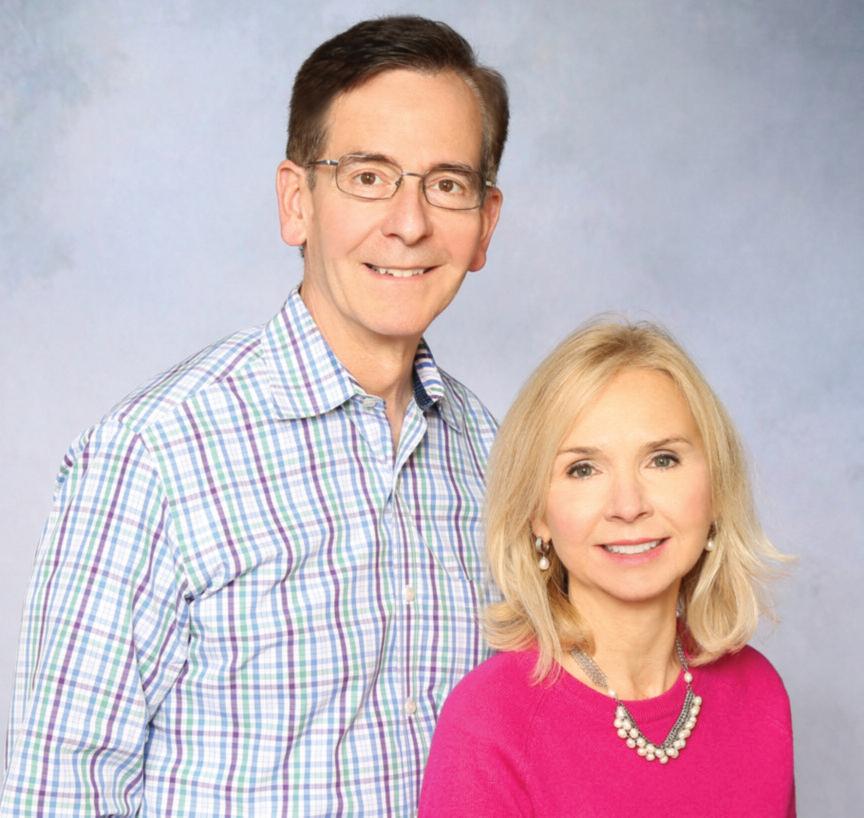
State political and legislative dynamics will ultimately determine if these proposals see the light of day. All the Democratic candidates for governor support legalizing recreational marijuana in some form Gov Bruce Rauner stands in opposition but has previously signed a marijuana decriminalization bill. Opposition also looms from the Illinois Association of Chiefs of Police and other law enforcement organizations who argue the need for studies on the impact of marijuana legalization in other states
However, Illinois is not alone in moving forward; more than 30 states have legalized medicinal marijuana use, and eight states allow recreational marijuana use And, waiting at the busy intersection of conflicting of state and federal laws are CPAs, who are increasingly being called upon to make sense of all of this in order to serve the growing “legal” marijuana industry
Author’s Note: This column includes my personal observations of the evolution of the legislative environment and are not necessarily the views of the Illinois CPA Society

www icpas org/insight | SPRING 2018 41 m a r i j u a n a e n f o rc e m e n t e f f o r t s i n s t a t e s t h a t h a v e l e g a l i z e d m a r i j u a n a u s e o r t a k e l a rg e r s t e p s i n r e c o n c i l i n g t h e c o n f l i c t b e t w e e n f e d e r a l a n d s t a t e l a w s b y a m e n d i n g t h e F e d e r a l
Substances
1970
e
e
n
u e n c e o
e u n d
r t h
i
f l
Chicagoland Business Broker WE CAN SELL YOUR CLIENT’S BUSINESS Call Dr. Rob Uhland (224) 458-9388 for listing details chicagolandbusinessbroker@gmail.com Help Business Clients! Incorporate Business Brokering! Increase Your Practice Revenues! CALL ME FOR DETAILS. C
Amanda L Gavin, CPA, MBA Manager, Global Tax & Trade, Caterpillar Inc
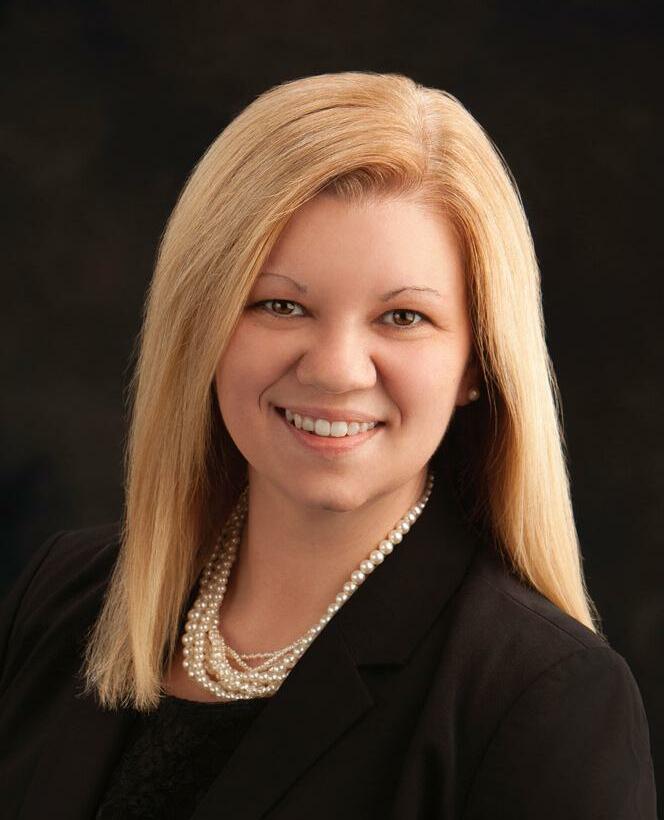
A Growing Career, A Growing Family
Here is how I found work-life balance in corporate finance.
I often get asked how I do it. “It” being growing my career while growing my family. We a l l k n o w m a n a g i n g c o m m i t m e n t s o u t s i d e o f o u r c o r p o r a t e f i n a n c e c a r e e r s c a n b e challenging Well, my current commitments include nine-year-old twin sons, a four-yearold daughter, a husband in college, and other professional and community involvement that keeps my life very full and rewarding!
What you may find interesting about this is that a year after my twins were born, realizing life was only going to become fuller, I decided it was time to become a CPA. With no extra time from sunrise to sunset, I had to create a schedule that would realistically let me pass the CPA exam within a year The term “burning the midnight oil” took on a whole new meaning for me, as I am sure it has for you at least once or twice before.
F a s t - f o r w a r d t o w h e r e I a m t o d a y, a n d I w i l l b e t h e f i r s t t o a d m i t t h a t m a i n t a i n i n g work-life balance is very difficult and requires a lot of planning and communication. It is e s p e c i a l l y c h a l l e n g i n g t o r e b a l a n c e a f t e r a p e r i o d o f c h a n g e l i k e w h e n y o u h a v e children or experience a major career change While reflecting on these changes in my l i f e , I r e a l i z e d f o u r p r i m a r y m o v e s h a v e a l w a y s h e l p e d m e f i n d a h e a l t h y w o r k - l i f e balance So, here’s how I do it
SET A SCHEDULE
No matter your involvements and commitments inside and outside of the office, each one should be a priority The best way I have found to keep these balanced is to set a regular work schedule where I begin and end on time While it is not always possible to end “on time,” especially when working with others, it is an important goal to work towards A good piece of advice I was given is to unapologetically let others know when I have a hard stop When a meeting looks like it may run long, and I need to leave to pick up my kids, I make it a point to state that I have a prior commitment and need to leave at “X” time I have found this helps keep work and meetings on target and serves as a reminder to all that setting priorities is important regardless of what they relate to
PLAN FOR BUSY SEASONS
Whenever possible, try to anticipate your high demand periods and plan accordingly For me, I know tax season is going to be demanding; so, I look ahead at school calendars and my children’s activities and adjust my work availability as needed. For instance, I will plan
42 INSIGHT | www icpas org/insight
C O R P O R A T E M I N D E D SUCCEEDING IN THE CORPORATE FINANCE WORLD
to go in earlier than usual on a day when I know I need to leave earlier than usual. Planning ahead has especially proven its worth when scheduling meetings at work and with volunteer groups. Let me tell you, i t i s m u c h e a s i e r t o s c h e d u l e a r o u n d e v e r y o n e ’s a v a i l a b i l i t y u p f r o n t v e r s u s risking missing an important event later.
When possible, I also try to get ahead in my volunteer work or avoid committing to activities that fall within my busier times T h i s a p p r o a c h h a s h e l p e d m e a v o i d b e c o m i n g o v e r w h e l m e d a n d b u r n e d o u t when conflicting demands arise
COMMUNICATE INTENTIONALLY

A friend of mine regularly shares a great George Bernard Shaw quote: “The single biggest problem in communication is the illusion that it has taken place ”
I cannot stress enough how important it is t o c o m m u n i c a t e a t w o r k , a t h o m e , a n d w h e r e v e r y o u r o t h e r c o m m i t m e n t s l e a d you. If I am going to work late, for example, I openly talk about it with my family t o t r y t o e n s u r e t h e r e a r e n o s u r p r i s e s . Communication needs to be intentional, especially when you are trying to maintain any semblance of work-life balance.
FIND FLEXIBILITY
Today’s workforce culture demands flexibility, but it is important to keep in mind t h a t f l e x i b i l i t y d o e s n o t a l w a y s m e a n working part-time hours; it means working smarter hours.
For many of us in accounting and finance p r o f e s s i o n s , w o r k i n g a d d i t i o n a l h o u r s d u r i n g b u s y p e r i o d s c a n n o t b e a v o i d e d , but I encourage you to consider when and where those tasks and extra hours can be completed Myself and many employees I work with plan our workdays around our c h i l d r e n ’s s c h e d u l e s M y f r i e n d J e n n i f e r, who works at a firm in St Louis, is in the office the same hours most days, arriving b y 8 a m a n d l e a v i n g b y 5 p m B u t , during her busier times, she continues to l e a v e o n t i m e a n d t h e n w o r k s f r o m h o m e a f t e r h e r c h i l d r e n g o t o b e d H e r schedule is consistent and allows for the o p p o r t u n i t y t o p r i o r i t i z e b o t h h e r c a r e e r and her family
I t o f t e n s e e m s t h a t w e m u s t c h o o s e b e t w e e n o u r p e r s o n a l o r p r o f e s s i o n a l goals and commitments, but I have seen otherwise. With the right moves, each one can be a priority, and you can have real work-life balance.
www icpas org/insight | SPRING 2018 43
Marc Rosenberg, CPA President, The Rosenberg Associates

Lessons to Learn From Today’s Young CPAs
My morning with 23 young professionals revealed plenty of insight CPA firm partners can benefit from
s a l o n g - t i m e e y e w i
n e s s t o C PA p a r t n e r b e h a v i o r, I h a v e m a r v e l e d a t h o w t h e y ’ v e described their staff over the years Most notably, that their comments are often more negative than positive, that their observations frequently start with “when I was their age,” and that they feel there is something so distinctive about young people today that makes it way more difficult for firms to develop staff than ever before
Paralleling my study of partner behavior, I am always seeking to understand what makes young professionals tick: how they think; what they want; what they like and dislike; and what they think of their firms and the partners
Rather than simply thinking about this, I’ve acted, convening Staff Forums for 10 years where Chicagoland firms send one young staff person to a three-hour forum to discuss these questions and more. Twenty-three young staff with an average tenure of two-and-ahalf years attended my forum at the end of 2017 Here’s what I found:
Why did you choose accounting as a career?
I n t h e p a s t , a c o m m o n r e s p o n s e w a s , “ I ’ m g o o d a t m a t h ” T h i s y e a r ’s g r o u p h a r d l y mentioned it. Given the state of technology today, it’s no longer critical that someone be good at math This has even been corroborated by dozens of managing partners My caveat is you can’t suck at math, though!
S o , w h a t ’s d r a w i n g y o u n g t a l e n t t o t h e p r o f e s s i o n ? C l e a r l y, t h e h i g h s a l a r i e s a n d t h e abundant supply of jobs are appealing, but it seems word of mouth is a big motivator Many participants cited having parents or family members that are CPAs, or friends and e d u c a t o r s t h a t t u r n e d t h e m o n t o t h e d i v e r s i t y o f w o r k , g r e a t t r a i n i n g , a n d f o c u s e d mentoring CPA firms offer
What do you like most about your job?
Nothing groundbreaking here. They enjoy the same things every generation before them has: the opportunity to learn and advance, the variety of work, gaining expertise in specific areas, and, believe it or not, the gaining of trust of partners and managers
What do you like the least about your job?
T h e c o m m o n c u l t u r e p r o b l e m s a m o n g f i r m s w e o f t e n d i s c u s s a r e , u n s u r p r i s i n g l y, t h e d o w n s i d e s v o i c e d b y t o d a y ’s y o u n g p r o f e s s i o n a l s : d i f f e r i n g s t a n d a r d s o f w o r k a m o n g p a r t n e r s ; u n w r i t t e n , v a g u e e x p e c t a t i o n s f o r h o u r s a n d b u s y - s e a s o n s c h e d u l e s ; o f f i c e politics; and the inability for partners to come together and make decisions
What I did find quite interesting is that tax season itself was not a problem for the clear majority of the attendees. Many even said that it’s nice being busy. What seemed to buoy
44 INSIGHT | www icpas org/insight
A
t
P A R T N E R P E R S P E C T I V E S MOVING YOUR FIRM FORWARD
their resolve and make the stressful tax season tolerable is that fact that “everyone is in it together,” plus they all know a healthy bonus is on the way for high performance and the hours put in.
Why did you choose the firm you did? What stood out?
It seems that an effective internship program within firms is possibly the best recruitment tool today two-thirds of the attendees interned with their current firms What did stand out among these young professionals is their desire to start out in smaller firms They perceived the small firm environment would yield better long-term career opportunities, whereas the larger firms would simply treat t h e m l i k e a n u m b e r, m e t i c u l o u s l y d i c t a t i n g a c a r e e r p a t h t h a t p i g e o n - h o l e s t h e m . O t h e r d e t e r r e n t s w e r e h e a v y t u r n o v e r a n d terrible work hours
What I found most interesting is that no one cited a special feature or attribute of the firm they chose that stood out from other firms. T h i s t e l l s m e e i t h e r f i r m s a r e d o i n g e v e r y t h i n g r i g h t ( d o u b t f u l ) , or they need to find better ways of differentiating themselves from the competition.
What kind of feedback do you get on the performance of your work?
Two-thirds of participants awarded their firms a grade of “B” or better for the delivery of feedback, but one-third was frustrated by the annual review process and how long it takes to receive meaningful feedback on their work. Overall, young professionals are looking for far more “This is how you’re doing” discussions to ensure they’re on the right track.
Do you know what it takes to be a partner?
Do you want to be a partner at your firm?

When two-thirds of participants don’t know what it takes to be a p a r t n e r i n t h e i r f i r m , a n d l e s s t h a n h a l f s a y t h e y w a n t t o b e partners, there’s a definite succession and retention problem to be addressed. Most young professionals see the work of partners as repetitive and boring, witnessing partners that are overwhelmed by paperwork and client management. The responsibility of “bringing i n b u s i n e s s ” a l s o r a i s e d a n x i o u s a n d u n c o m f o r t a b l e f e e l i n g s among this group Of course, the politics of being a partner are also a turn-off.
T h e s e a r e a l l i s s u e s t h a t a r e v e r y a d d r e s s a b l e w i t h i n f i r m s , especially small firms It’s been my belief that the main reason why staff say they don’t want to be a partner is because they really haven’t a clue what it means to be a partner or how one becomes a partner Overall, it’s my personal experience that partners do a lousy job of educating staff on how great it is to be a partner in a CPA firm
Supporting this view are the facts that two-thirds of the participants h a d n o c l u e h o w m a n y h o u r s o n a v e r a g e a p a r t n e r w o r k s ( t h e average response was 2,609 hours, 150 higher than actual). Also, w h e n a s k e d w h a t t h e y t h i n k t h e i r p a r t n e r s e a r n , t h e a v e r a g e response was 29 percent below the actual amount of $464,000
What are the biggest misconceptions about your generation in the work force?
Misconception number one: Millennials are lazy Their argument is that if expectations aren’t clear, which is often the case, it may seem like they’re lazy, but they’re not
M i s c o n c e p t i o n n u m b e r t w o : M i l l e n n i a l s a r e a l l t h e s a m e T h e consensus among attendees was that partners should stop reading all the literature on millennials and stereotyping them The fact of the matter is, not all millennials are the same They don’t all want to work as little as possible or only from home. In fact, more than
anything, millennials are looking for partners to recognize them as individuals and treat them as such
What amount of flexibility do you have at your firms?
A couple of interesting items came out of this discussion To start, 1 8 o f t h e 2 3 p a r t i c i p a n t s r a t e d t h e i r f i r m s h i g h o n f l e x i b i l i t y while the remaining five rated it average or low Despite this flexibility, however, many in the group felt that partners frown upon w o r k i n g r e m o t e l y : “ M a n y p a r t n e r s t h i n k i f y o u ’ r e n o t i n t h e office, you’re not working. We need to change the mindset of the partners on this ”
W h a t ’s m o r e , a l t h o u g h f l e x i b l e a n d r e m o t e w o r k o p t i o n s a r e desired among young professionals, they still feel that having face time with partners and managers is really important.
What can your firm do to make sure you stay with them for at least five more years (short of unreasonable things like doubling your salary)?
Overall, young professionals are looking for continued developm e n t , v a r i e t y o f w o r k , a n d a d v a n c e m e n t p o t e n t i a l , i n a d d i t i o n t o g r e a t e r w o r k - f r o m - h o m e p o l i c i e s , a n d t h e s e t t l i n g o f t h e “older-person” stigma that flexible and remote work arrangements are negative things

A r m e d w i t h t h i s i n s i g h t , i t s e e m s m i l l e n n i a l s a r e n ’t s o h a r d t o please, retain, or develop after all. In fact, maybe it’s the partners that need to develop new views on the future of the profession and our firms
Perennially cited by Inside Public Accounting as one of the 10 most recommended consultants in the country, Marc Rosenberg, CPA is a nationally renowned consultant, author, and speaker on CPA firm mana g e m e n t , s t ra t e g y, a n d p a r t n e r i s s u e s H i s 1 4 p ra c t i c e m a n a g e m e n t books are available at https://rosenbergassoc com/shop/, and Marc can be reached at 847 251 7100 @ b
www icpas org/insight | SPRING 2018 45
MO W CONNECT w th CPAs and other professiona s at ne work ng and chapter events ADVANCE your career through our Career Center and eadership oppor un t es DEVELOP cr t cal ski s through education programs and free CPE of fer ngs Be a par t of the movement Renew today at www.icpas.org
Elizabeth Pittelkow Kittner
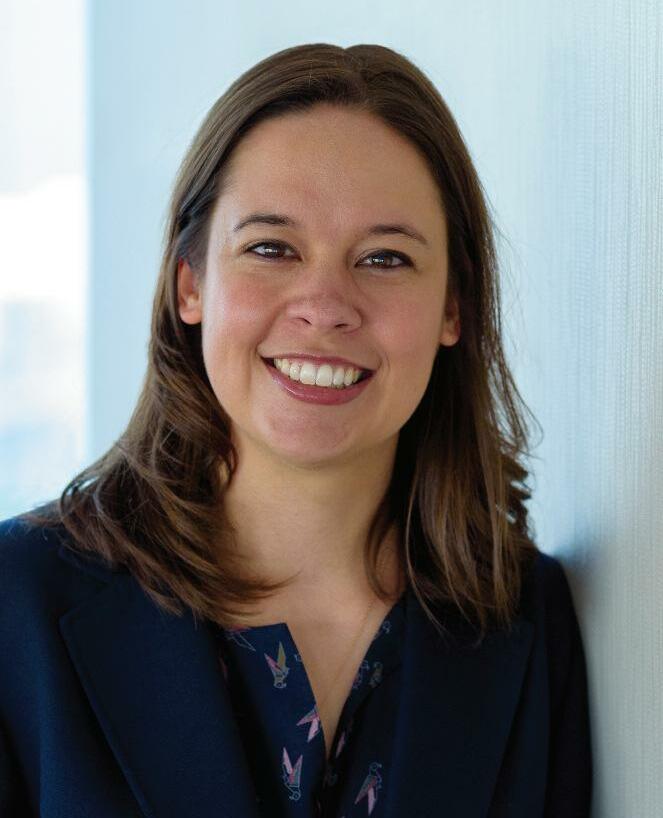
The Golden Rules of Ethics
Here is how to ensure you are thinking and acting ethically in the business world
supervisors,
with vendors, and serve our clients. So how do we ensure that our interactions are always ethical? Trust
The 2018 Edelman Trust Barometer reveals that trust in the U S has suffered the survey’s largest-ever-recorded drop, placing trust among the informed public below that of Russia and South Africa When you consider the foundation of our profession is built on trust and integrity, we must ask if we are doing our part to build and protect trust.
People are watching us all the time, even if we are unaware of it If someone drops money on the ground, and you pick it up and keep it instead of giving it to the person that dropped it, someone will probably see you, and it may be someone you interact with personally or professionally If we are told confidential information and then tell others, we break t r u s t E v e n t h e p e o p l e w e s h a r e t h e i n f o r m a t i o n w i t h w i l l l e a r n t h a t w e c a n n o t k e e p confidential information private Think of the damage this behavior can cause
Whenever I think about interacting with people, I think about the Golden Rule, “Do unto others as you would have them do unto you ” Many of us operate with this rule in mind, but how do we know what we would like done unto us is what others want done unto them I propose an evolved golden rule: Do unto others as they would like done unto them How do you know what they would like done unto them? The best way is to ask However, do you know of the five other “goldens” that can guide your ethical behavior?
T h e b o o k , “ A m o n g C u l t u r e s : T h e C h a l l e n g e o f C o m m u n i c a t i o n ” b y B r a d f o r d J . H a l l describes them and I offer a practical example in the event your coworker is a fraudster:
Golden Purse: Hall describes this concept as, “The one who has the gold makes the rules ” By this concept, you would likely do whatever your board of directors wants since they have the power, they control the money, and you want to keep them happy
G o l d e n C o n s e q u e n c e : A l s o k n o w n a s u t i l i t a r i a n i s m , t h i s p r i n c i p l e a i m s t o m a x i m i z e
t h e g o o d f o r t h e m o s t p e o p l e w h i l e m i n i m i z i n g t h e b a d f o r t h e m o s t p e o p l e B y t h i s principle, you would tell someone in senior management about the fraudster, so it can be handled through proper procedures because it will do the most good and least bad for the most people
Golden Law: This concept says there is a clear right and wrong that does not change by circumstance. In practice, you would do what you feel is right regardless of any other factors, including benefits or consequences, which likely means reporting the fraudster to management and whoever can help.
46 INSIGHT | www icpas org/insight
a minute to consider all the ways you interact in the business world. Sometimes you m a y o n l y i n t e r a c t w i t h d o c u m e n t s a n d t r a n s a c t i o n s , a n d s o m e t i m e s y o u w i l l h a v e t o interact
staff,
to
Take
with people. For many of us, we must manage
report
work
E T H I C S E N G A G E D EXPLORING ETHICS IN BUSINESS & FINANCE TODAY
CPA, CGMA, CITP, DTM Controller, Litera Microsystems
Golden Mean: Attributed to Aristotle, this “golden” expresses that the best answer exists between two extremes of a situation. This principle takes a “meet me in the middle” approach, meaning you might look to find the middle ground between (a) ignoring the fraud and continuing business as usual and (b) quitting as to not be around the fraudster An answer could be anonymously reporting the fraud to management and then letting them take care of it
Golden Public: By this concept, you should only act in a way that you are comfortable explaining to your peers or the public What would the public want? The public probably wants you to report the fraudster and to tell them that it happened.
W h i l e t h e o u t c o m e s a r e s i m i l a r f o r s e v e r a l o f t h e “ g o l d e n s , ” t h e r e a r e d i f f e r e n t “ r i g h t ” a n s w e r s t h a t c a n a p p l y t o e a c h o f them, and while you may lean toward one “golden” most often, you can still apply others when an ethical situation warrants a different approach
O f c o u r s e , o n e o f o u r r e s p o n s i b i l i t i e s i s a l i g n i n g o u r s e l v e s with ethical people and employers in the first place. If you are interviewing for a new position, there are several questions you c a n , a n d s h o u l d , a s k t o l e a r n a b o u t a c o m p a n y ’s e t h i c s . T h e f o l l o w i n g a r e r e c o m m e n d e d i n F i n a n c i a l M a n a g e m e n t Magazine’s “7 Ethics Questions Finance Professionals Should Ask Prospective Employers”:
• How do you assess your culture or values, and how do you assess the extent the culture and values are embedded?
• What training do you offer in this area?
• What routes do you have for escalating any ethical concerns? Do you have “speak up” procedures and, if so, how are they managed?
• H o w i s i n d i v i d u a l p e r f o r m a n c e a s s e s s e d i n r e l a t i o n t o t h e desired and/or stated behaviors?
• W h a t a c t i o n d o y o u t a k e a g a i n s t s t a f f m e m b e r s w h o b r e a c h company policies or are found to have breached any regulations?
• Have you identified any areas of concern in staff engagement s u r v e y s o r c u s t o m e r s a t i s f a c t i o n s u r v e y s , a n d h o w a r e t h e y being dealt with?
• Wo u l d t h e o rg a n i z a t i o n w e l c o m e a p p r o p r i a t e c h a l l e n g e i n regard to issues of integrity?
Within your own company, promoting the company culture and i n s p i r i n g e t h i c a l i n t e r p e r s o n a l r e l a t i o n s h i p s s h o u l d b e t o p priorities. I suggest creating opportunities for teams to work on e f f e c t i v e w r i t t e n a n d v e r b a l c o m m u n i c a t i o n s k i l l s , p r o m o t i n g teamwork and collaboration, and escalating issues as soon as they a r i s e , w h i l e a l s o s e t t i n g a n o r e t a l i a t i o n p o l i c y. Yo u h a v e a responsibility to foster an environment that protects employees and the public and stamps out fraud and collusion
According to the Association of Certified Fraud Examiners’ 2016 G l o b a l F r a u d S u r v e y, “ n e a r l y h a l f o f t h e c a s e s i n o u r s t u d y i n v o l v e d m u l t i p l e p e r p e t r a t o r s c o l l u d i n g w i t h o n e a n o t h e r t o commit fraud, and the greater the number of fraudsters involved, the higher losses tended to be ”
O rg a n i z a t i o n s n e e d t o m a k e i t c l e a r t h a t f r a u d s t e r s w i l l b e prosecuted to demonstrate that fraud and unethical behavior will n o t b e t o l e r a t e d E s t a b l i s h i n g c u l t u r e s o f h i g h i n t e g r i t y a n d accountability, backed by written codes of ethics, and upheld by internal and external audits sets us on a path to rebuilding and sustaining trust and integrity in our business world
For more than one hundred years, The Club has been a valued resource for Chicago’s business leaders - connecting members, providing opportunities for strategic relationship development, access to world class speakers, and enhanced exposure to the broader business communit y.
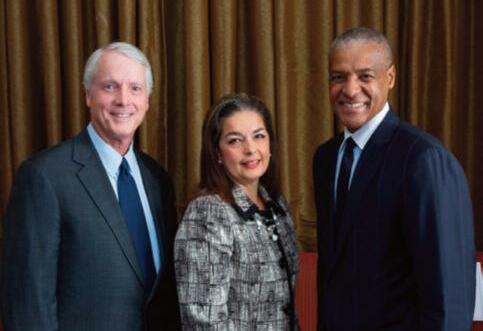
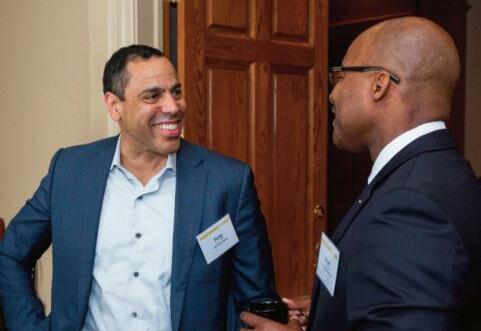

W ith initiatives, such as Signature Series programs, EC Associates (under 30), Leadership Circle (under 40), forum events and other member perks, there are ways for women and men of all ages to learn and grow at The Club
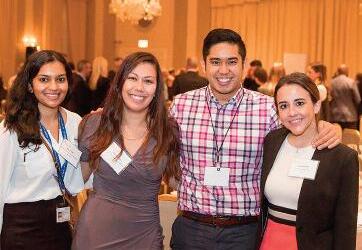

www icpas org/insight | SPRING 2018 47
Become a member today. Contact us at 312-283-2196 or Membership@ExecutivesClub.org to learn more.
GROW. CONNECT. INSPIRE. JOIN THE CLUB
Keith Staats, JD Executive Director Illinois Chamber Tax Institute
Federal Tax Reform’s Implications on Illinois
The full impacts of federal income tax reform on Illinois taxpayers are just coming into focus
L i k e m a n y s t a t e i n c o m e t a x l a w s , t h e I l l i n o i s I n c o m e Ta x A c t ( I I TA ) u s e s t h e I n t e r n a l Revenue Code (IRC) as the starting point for calculating Illinois income tax liabilities So, when sweeping federal tax changes come along, the first question is the extent to which Illinois will conform.
Unlike many other states, Illinois law provides for automatic conformity In states that don’t automatically conform, maintaining conformity becomes a timing and legislative variable In other words, conforming to or decoupling from federal tax law, and determining the s t a t e ’s t a x i m p a c t o f d o i n g s o , i s a d a u n t i n g t a s k F o r t u n a t e l y, a l o n g w i t h I l l i n o i s ’ automatic conformity, most of the federal tax changes are effective for 2018 and beyond, which gives us some time to work through the implications for Illinois. Let’s get started.
First off, many of the headline-grabbing federal tax changes have little to no impact on Illinois’ tax base. For instance, the reductions and changes in corporate and individual i n c o m e t a x r a t e s d o n ’t h a v e a n i m p a c t o n t h e I l l i n o i s t a x b a s e E v e n t h e 2 0 p e rc e n t d e d u c t i o n f o r p a s s - t h r o u g h e n t i t i e s p u r s u a n t t o I R C S e c t i o n 1 9 9 A d o e s n ’t a f f e c t t h e computation of the personal property replacement tax Illinois imposes on partnerships and S corporations
In the case of individual taxpayers, net income subject to Illinois income tax is determined b y f e d e r a l a d j u s t e d g r o s s i n c o m e c a l c u l a t e d b e f o r e i t e m i z e d f e d e r a l d e d u c t i o n s . I n addition, the federal tax reform change reducing personal exemptions to zero doesn’t affect Illinois personal exemptions either because the federal personal exemptions weren’t repealed just reduced.
As for corporate taxpayers, an impact could be felt by taxpayers and the state since the c a l c u l a t i o n o f n e t i n c o m e s u b j e c t t o I l l i n o i s i n c o m e t a x b e g i n s w i t h f e d e r a l t a x a b l e i n c o m e , i n c l u d i n g f e d e r a l l y a u t h o r i z e d d e d u c t i o n s , a n d i s s u b j e c t t o c e r t a i n s t a t e modifications Corporations also use this same net income amount for calculating their personal property replacement tax liability in Illinois.
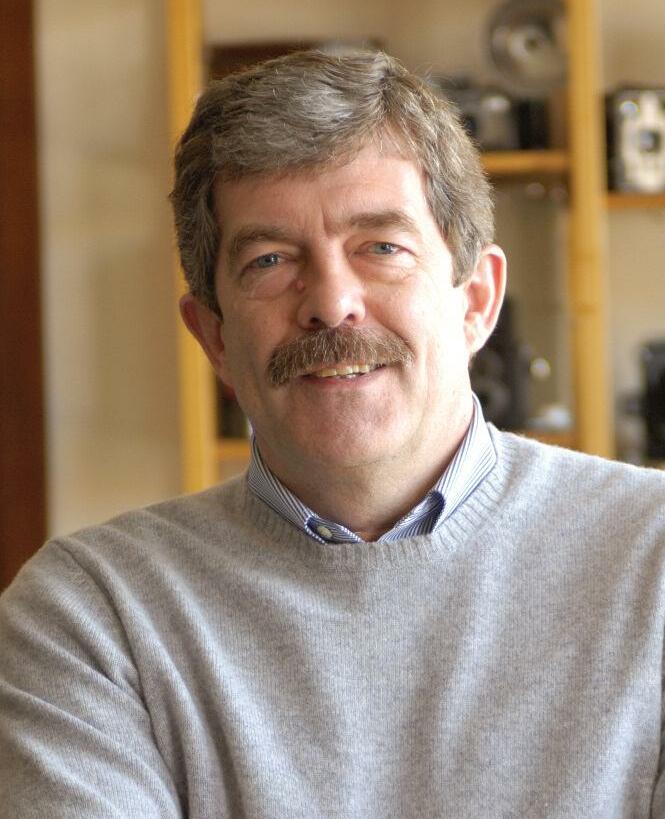
All that said, there are several federal tax law changes that will affect corporate income taxation in Illinois. Some will reduce the Illinois tax base, while some will increase the tax base Here are some highlights:
• IRC Section 163(j) is amended to limit the interest expense deduction to 30 percent of adjusted taxable income plus the taxpayer ’s interest income.
48 INSIGHT | www icpas org/insight
T A X D E C O D E D DECIPHERING TODAY’S STATE AND FEDERAL TAX LAWS
• IRC Section 199, the domestic production activity deduction, was repealed. However, Illinois “decoupled” from this federal deduction in 2017.
• IRC Section 243(a) is amended to reduce the dividends received deduction, which can reduce the foreign dividends subtraction allowed under IITA Section 203(b)(2)(O).
• IRC Section 965 is amended to require deemed repatriation of certain income for federal income tax purposes Much of this income will be excluded from Illinois income taxation by the foreign dividend subtraction under IITA Section 203(b)(2)(O) We’re awaiting further guidance from the Illinois Department of Revenue on this
• I R C S e c t i o n 9 5 1 A p r o v i d e s f o r f e d e r a l t a x a t i o n o f a U S s h a r e h o l d e r ’s s h a r e o f g l o b a l i n t a n g i b l e l o w - t a x e d i n c o m e o f a c o n t r o l l e d f o r e i g n c o r p o r a t i o n H o w e v e r, a p o r t i o n o f t h i s i n c o m e w i l l a l s o b e e x c l u d e d b y t h e f o r e i g n d i v i d e n d subtraction (awaiting guidance)
• I R C S e c t
i o n 1 7 9 , a s m a
Among the federal changes, the one spurring Illinois legislators into action is the state and local tax (SALT) deduction at the federal level being limited to $10,000 This limitation doesn’t affect an individual’s Illinois income tax liability However, the limitation will increase federal income taxes for many individuals, especially those who live in areas with high property taxes
This has triggered Illinois legislation to “work around” the federal limit by recharacterizing SALT payments as “charitable deductions” for which there is no comparable federal limitation Recently introduced in the Illinois General Assembly, HB 4227 would authorize the establishment of charitable funds at the state and county level Taxpayers could make payments to the charitable funds in amounts equal to their local property tax and Illinois income tax liabilities and then receive charitable deductions for federal income tax purposes. Further, HB 4563 would allow taxpayers to receive a credit against their property taxes for donations made to a local school district foundation Both proposals depend on the IRS agreeing that the “donations” would qualify as charitable donations for federal income tax purposes Without going into detailed analysis of federal law, I believe it’s unclear the IRS will agree to qualify these donations for charitable deductions
Where can an AICPA
C redential
take your career next?
If you have a specialized interest, you can build on the value you offer clients by adding an AICPA advisory service credential: Personal Financial Specialist (PFS ), Accredited in Business Valuation (ABV ®), Certi ed in Financial Forensics (CFF ®) or Certi ed Information Technology Professional (CITP®). These credentials were developed for the profession by the profession They set you apart, make a statement and get you noticed And, they can seriously boost your career.
www icpas org/insight | SPRING 2018 49 Explore your opportunities at aicpa.org/aicpacredentials. © 2017 Associat on of International Cert ed Profess ona Accountants A l r ghts reserved AICPA and Amer can Institute of CPAs are trademarks of the Amer can nst tute of Certi ed Publ c Accountants and are reg stered n the United States European Un on and other countries The G obe Design s a trademark owned by the Assoc ation of nternat ona Certi ed Professional Accountants and l censed to the AICPA 23438B-326

l l
s d e d u c t i o
i s a m e n d e d
from
• The 100 percent bonus depreciation enacted at the federal level pursuant to IRC Section 168(k) will flow through to Illinois tax r e t u r n s , r e d u c i n g I l l i n o i s i n c o m e t a x l i a b i l i t y. T h e I I TA w a s a m e n d e d a f e w y e a r s a g o t o d e c o u p l e f r o m f e d e r a l b o n u s d e p r e c i a t i o n ; h o w e v e r, b e c a u s e o f t h e m e c h a n i c s o f I l l i n o i s ’ l a w, 1 0 0 p e rc e n t d e p r e c i a t i o n f e d e r a l l y i s n o t s u b j e c t t o a n add-back at the Illinois level. This deduction is likely to cause the biggest reduction in Illinois’ tax base in 2018 allowing i m m e d i a t e e x p e n s i n g i n t h e y e a r t h e i t e m i s a c q u i r e d a n d placed in service shifts the deduction to that first year rather than spreading the deduction over the useful life of the item t o $ 1 m i l l i o n a n d t o i n c r e a s e p h a s e o u t o f t h e d e d u c t i o n t o $2.5 million.
b u s i n e s
n ,
to double the maximum depreciation deduction
$500,000
At this point, it’s too soon to tell if Illinois will see a net gain or loss in income tax revenues because of federal tax reform, but there’s plenty going on as the federal legislation is implemented and the effects flow down to the state level
Brewing Your Own Business
Whether your passion is for craf t beer or tech star tups, creating your own CPA firm gives you the freedom to choose your career path
BY JOSHUA L ANCE, CPA , CGMA
Like most accountants star ting out in the profession, I began my career at a public accounting firm with my eye s o n eve n t u a l l y b e c o m i n g a p a r t n e r B u t af ter seven years in audit, and most of that time on the road, I decided to step away from public accounting and transition into private industr y also a common path for CPAs However, this is where my path diverges from most M y e m p l oye r d e c i d e d to m ove i t s h e a d q u a r te r s f ro m C h i c a g o to S a n Fra n c i s c o W i t h a l l my fa m i l y i n t h e Midwest, including a newborn son, relocating wasn’t an option But there were options
I’ve always been a bit of an entrepreneur As most kids do, I set up a lemonade stand outside of my house selling lemonade and fruit punch to passersby on warm summer days Not content to wait for thirsty travelers to come to me, I took my lemonade stand on the road, selling door-to-door and at nearby parks Later, during college (pre-Uber), I created a local airpor t shuttle ser vice for students
In looking back and realizing that creating a business from the ground up always lef t me feeling energized, it only made sense that my next career move would be star ting a CPA firm from scratch It’s not a common path for most accountants, but it’s a path that of fers the freedom to create a unique CPA firm, one that operates best for you and your clients
Star ting my own firm enabled me to build a business that took what I liked from my early days in public accounting and experiences in private industr y (and avoid what I didn’t like) Here’s what I mean: I loved that the firm I star ted my career with was highly niched in the banking industr y That meant I got to ser ve our clients better by becoming an exper t in that industr y My least favorite experience in public accounting was tracking time So, when I star ted my firm, I decided we would ser ve a distinct niche in star tups, drawing on my private industr y experience, and craf t breweries, an industr y I have a passion for I also decided we would implement value pricing instead of tracking time
I was also able to structure the firm to best fit with the rest of my life My wife and I now have two young children, and I wanted the ability to see my family throughout the day While my firm is technically based in Chicago, my employees are all stay -at-home parents, working remotely and on flextime Thanks to today’s technologies, whether it be a cof fee roaster y in Hawaii, a brewer y in Washington D C , or a tech star tup in Barcelona, we have the tools to ser ve our clients well and be a global CPA firm all from our kitchen tables
From landing the first client, to hiring employees, to building a vir tual CPA firm that ser ves clients globally, creating and growing Lance CPA Group has been an amazing journey Not only have I grown my business, I have grown as a CPA , and I have learned more about the profession than I ever would have if I stayed on a common CPA career path I’m excited to keep growing my firm, and the CPA profession, in the years ahead What about you?
Illinois CPA Society member Joshua Lance, CPA , CGMA is the founder and managing director of Lance CPA Group He can be reached at josh@lancecpa com

50 INSIGHT | www icpas org/insight
C L A S S I F I E D S
VALUATION OF YOUR CLIENT’S BUSINESS OR PRACTICE
By: Crandall & Brackett, Ltd. | Phone: 630 344 2355
Email: rober t@crandall-brackett com | Web: www crandall-brackett com
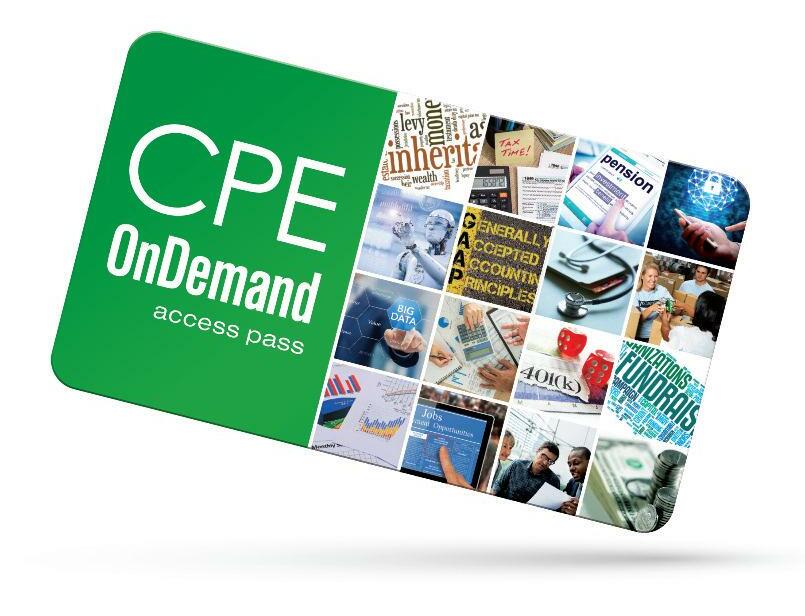
Our only ser vice is per formed on your behalf in a mutual engagement setting From basic research to a full valuation, we tailor our ser vices to your needs We author, teach and par ticipate on policy setting committees and boards within the valuation profession
BUY OR SELL AN ILLINOIS ACCOUNTING OR TAX PRACTICE
ILLINOIS PRACTICES FOR SALE:
Gross revenues shown
E Central IL CPA $250K; Southern IL (S of I-70) CPA $1 4M Available af ter 4/15/18: Auorora/Naper ville Area CPA $4 45K; Naper ville CPA $234K; Far N Side of Chicago City CPA $547
For practice details call 1-800-397-0249 Or, visit us at www APS net to inquire about available oppor tunities and register for free email updates

THINKING OF SELLING YOUR PRACTICE?

Accounting Practice Sales is the leading marketer of accounting and tax practices in Nor th America We have a large pool of buyers, both individuals and firms, looking for practices now We also have the experience to help you find the right fit for your firm, negotiate the best price and terms and get the deal done
To learn about our risk-free and confidential ser vices, call Trent Holmes at 1-800-397-0249 or email Trent@APS net
www icpas org/insight | SPRING 2018 51
Hoping to reach 24,000 leading accounting and finance and business professionals in Illinois? ICPAS Members receive a 50% discount on INSIGHT Magazine display ads Contact Mike Walker at mike@r wwcompany.com A D V E R T I S E T O D A Y 40 Hour s of CPE f or onl y $199! Instant access to the hottest topics delivered in a fun and engaging format! Gain your insider access today at www.icpas.org/accesspass Subscr ption good through September 30, 2018 Expanded catalog of more than 100 courses Animated case studies and interactive games Real world solutions from leading exper ts A fast, inexpensive and easy way to meet your CPE Repor ting Year requirements before the September 30, 2018 deadline!
K i m S z a l ku s
V ice President of Finance and Administration, Ronald McDonald House Charities of Chicagoland & Nor thwest Indiana
By Sarah Herrmann
In accounting and finance, our competitive paychecks might be perks, but the real rewards come when the work we do suppor ts causes we care deeply about Fo r I l l i n o i s C PA S o c i et y m e m b e r K i m S z a l ku s , C PA , h e r c h a n c e to s e r ve a greater cause came by way of a close personal experience with Ronald McDonald House Charities and maybe a touch of coincidence
Q: What inspired you to pursue a career at Ronald McDonald House Charities of Chicagoland & Nor thwest Indiana (RMHC-CNI)?
I n 2 0 07, my 1 0 - ye a r- o l d n e p h e w, M a x , wa s d i a g n o s e d w i t h a l i fe - t h re a te n i n g genetic brain disease and under went a bone marrow transplant at the University of Minnesota Children’s Hospital The life-saving procedure required Max and his parents, who lived in Hawaii at the time, to live in Minnesota for almost a year RMHC - Upper Midwest housed and fed them during this dif ficult time As my husband and I traveled back and for th between Chicago and Minneapolis in suppor t of our family, we were amazed at the quality of the facility and the care and concern of the staf f and Minneapolis community We were so grateful that our family had this suppor t that my husband and I star ted volunteering at RMHC near Loyola When a VP of Finance and Administration role for RMHC-CNI was posted on LinkedIn, I had to apply I star ted with RMHC-CNI in August 20 17

Q: How has RMHC impacted your career?
The mission of RMHC-CNI is to care for families of children with complex medical needs by providing comfor t, compassion, and community it keeps families together in a home away from home I clearly have a firsthand personal connection to the mission and understand how impor tant it is to suppor t these children and their families during what is of ten a crisis; this drives ever y decision that I make as a finance person, and it is great to wake up ever y morning knowing that my work is making a dif ference in other people’s lives
Q: How has the CPA credential helped you in this role?
It is impossible to execute our programs and ser vices without the required funding Unlike a for-profit organization where you are selling a product or ser vice, our revenue stream comes from donors Maximizing each dollar is what we strive for ever y day It is my job to make sure that we have adequate cash flow, that our money is invested wisely, and that we are making prudent, mission-based spending decisions The CPA credential opened the doors for me to gain the valuable experience I need to execute in this role
Q: What advice do you have for others looking to use their careers to make a dif ference?
In my case, I had a special connection to this organization and applied purely for personal reasons Obviously, taking a role at an organization that means something to you is one way to give back, but there are cer tainly other ways if that option isn’t available at the time: Volunteer for an organization during your personal time; par ticipate in charitable events sponsored by your employer; organize a group and par ticipate in the CPA Day of Ser vice Ever y volunteer oppor tunity provides a critical ser vice It is a great way to use your career to give back, and it is a fabulous way to extend your network and learn of new career oppor tunities related to the causes you care about
I N S I G H T S F R O M T H E P R O F E S S I O N ’ S M O V E R S A N D S H A K E R S
52 INSIGHT | www icpas org/insight
Stay Smart
Conferences
May 1 Government Conference and Building Blocks Workshop (Oak Brook)

May 2 Government Conference and Building Blocks Workshop (Springfield)
May 17
Estate and Gift Conference (In-Person & Simulcast)
May 22 Employee Benefits Conference

June 1 Young Professionals Leadership Conference: Influence
June 5 Taxation on Real Estate Conference (In-Person & Simulcast)
June 12 Not-for-Profit Advanced Accounting & Uniform Guidance Conference (In-Person & Simulcast)
Courses
May 2 MS Excel: Formulas and Functions
May 8 Revenue Recognition Workshop: Mastering the New Standard (In-Person & Simulcast)
May 10
Peer Review Forum (In-Person & Simulcast)
May 11 Project Management Skills for Non-Project Managers
May 16 Partnership and LLC Core Tax Issues From Formation Through Liquidation (In-Person & Simulcast)
May 17 K-1 Boot Camp for S Corporations and LLCs
May 18 The Tax Cuts and Jobs Act: A Guide to the Most Sweeping Tax Reform in Over 30 Years
(In-Person & Simulcast)

May 18 Understanding Section 199A: The 20% Deduction for Pass Through Entity Owners and Investors
May 30 The Bottom Line on the New Lease Accounting Requirements (In-Person & Simulcast)
May 31 Customer Service Skills and Excellence
June 4 Annual Update: Top Governmental and Not-for-Profit Accounting and Auditing Issues Facing CPAs
Academies of Learning
June 6 | June 27 | July 11 | July 25
Cybersecurity Risk Management Academy
Special Events
May 4
Women’s Leadership Breakfast
August 28-29
ICPAS SUMMIT18 (Formerly the Midwest Accounting & Finance Showcase)
June 5 Governmental and Not-for-Profit Annual Update
June 5 MS Excel: Create, Format, Print, Report: Understanding the Tools That Are Used Everyday
June 14 Audits of 401(k) Plans (In-Person & Simulcast)
June 20 Effective Business Writing Skills
June 25 Time Management and Personal Effectiveness Skills
July 11-12 Staff Training - Basic
July 12 Annual Update for Accountants and Auditors
July 16 Data Breaches & Other Cyber Frauds: A 21st Century Risk to Your Organization
July 16 Tax of Individuals Living Abroad and Foreign Nationals Living in the U.S. (In-Person & Simulcast)
July 18
July 18
Hottest Tax Planning Developments Under the Current Tax Law (In-Person & Simulcast)
Taxation of Property Transactions (In-Person & Simulcast)
July 19 Nexus Update: Latest Developments in State Income, Franchise, and Sales Tax (In-Person & Simulcast)
July 23
Multistate Income Tax (In-Person & Simulcast)
For a full listing of all upcoming education programs visit www.icpas.org/education
Get today’s must-have skills!
LET US HELP YOU TAKE THE EDGE IN YOUR CAREER.
Accounting Principals and Parker + Lynch know every candidate’s career situation is unique Different contexts require custom considerations. We balance both business and human factors when recruiting our candidates and pairing them with clients If you are a qualified candidate looking to advance your career in accounting and finance, our experts can help you power through and clear the many hurdles of the job search Don’t settle for second place Contact us today.

C h i c a g o 3 1 2 5 8 3 9 2 6 4 I D e e r f i e l d 8 4 7 6 0 7 0 5 5 0 I O a k b r o o k Te r r a c e 6 3 0 7 9 2 1 6 6 0 I S c h a u m b u r g 8 4 7 3 97 97 0 0 a c c o u n t i n g p r i n c i p a l s c o m p a r ke r l y n c h c o m

























 BY MARK GILBERT, CPA, PFS
BY MARK GILBERT, CPA, PFS


































































